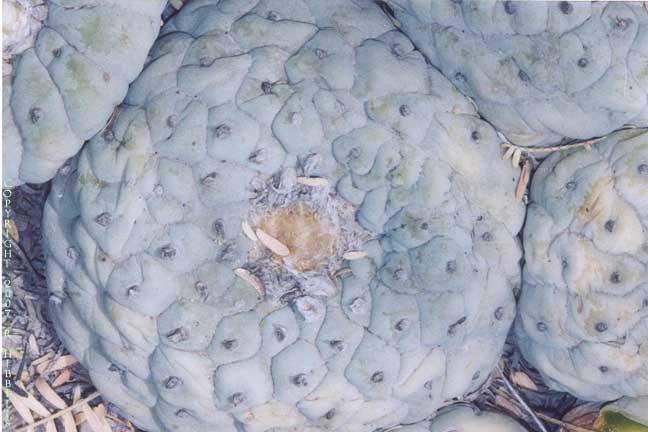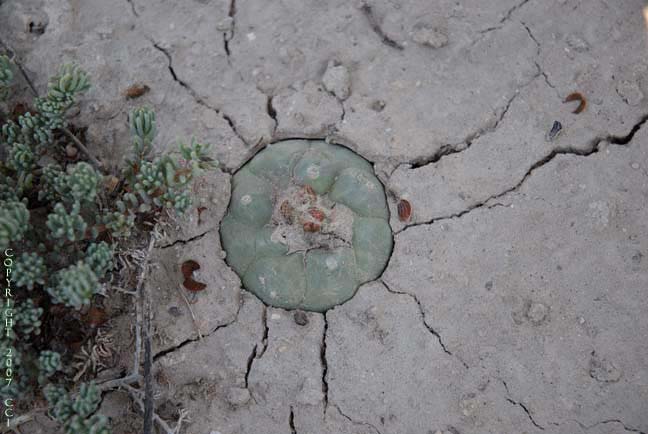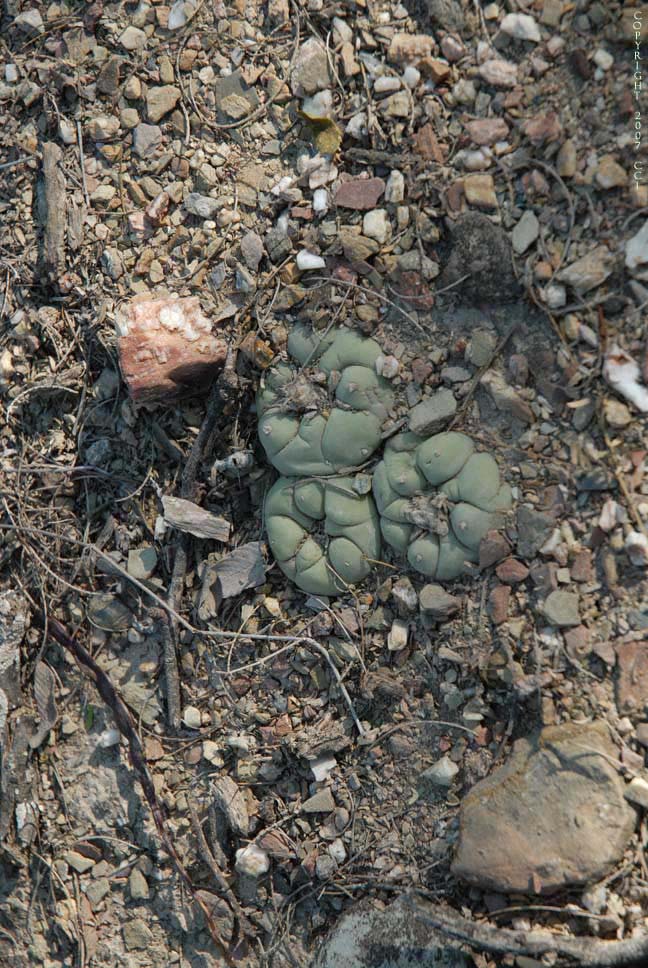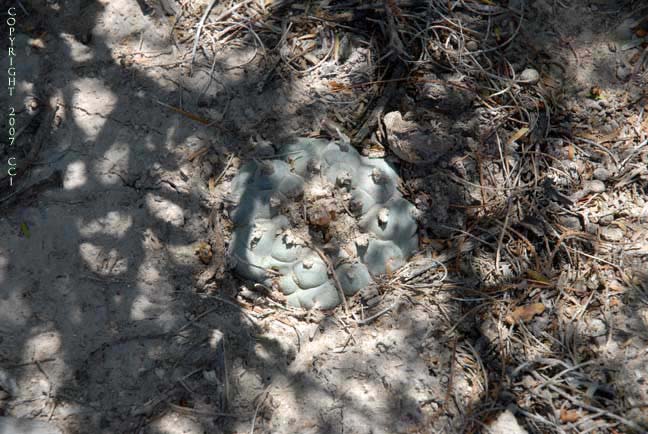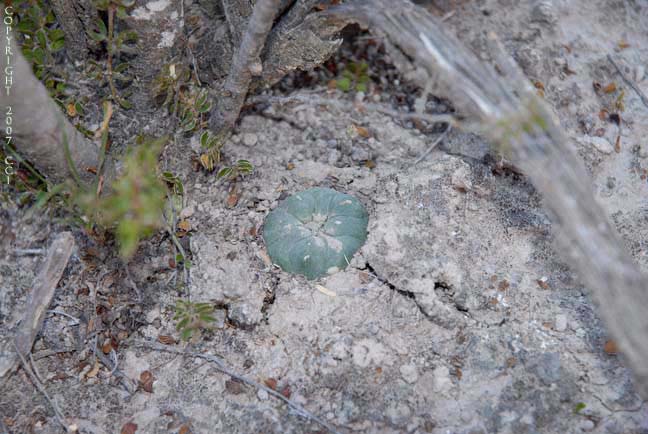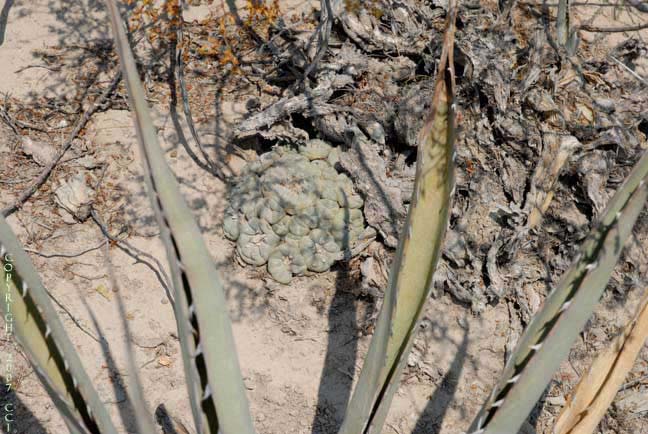It is fairly commonly accepted that there are four recognized species in the genus Lophophora.
L. williamsii is the best known peyote plant.
Of the four accepted species this is the only one that has hallucinogenic properties.
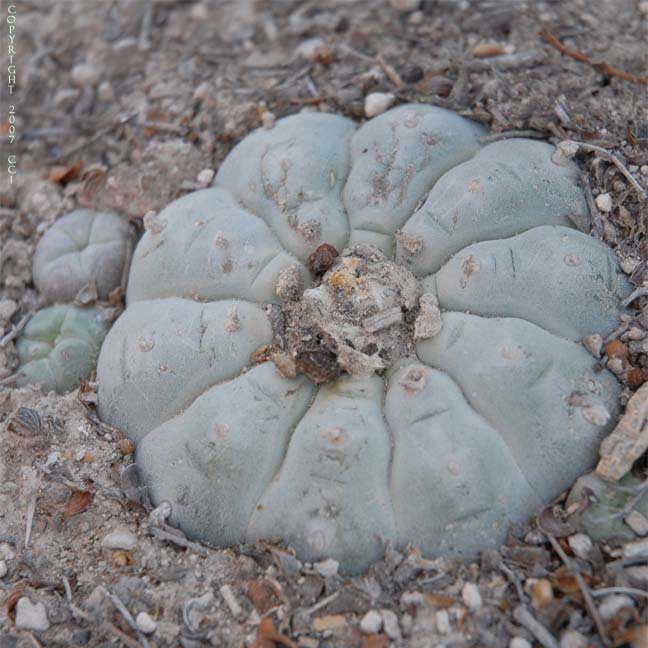
Lophophora williamsii
L. williamsii has at least two forms that need more study.
These plants appear to be similar to if not identical with the small and scattered West Texas populations.
We know that the northern populations of L. williamsii (including all of the known US populations and most probably the Coahuilan plants) are self-fertile. This means that they outcross very little and within a given population there is little to no genetic diversity among individuals.
(Based on the preliminary DNA data published in Chapter IV of Dr. Terry’s dissertation.)
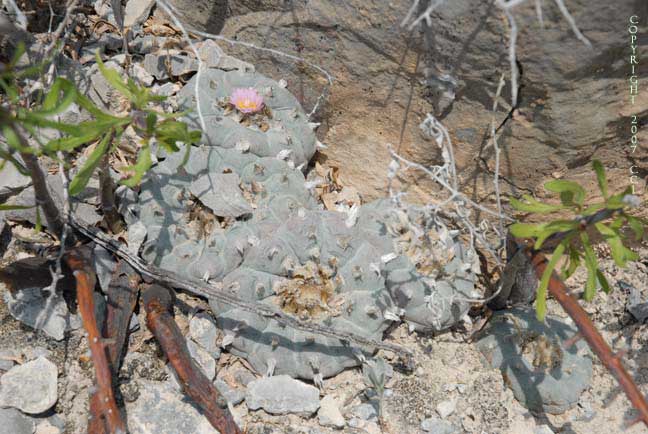
These plants appear to be morphologically similar to if not identical with the South Texas populations.
It is not known if these Tamaulipan plants are also similar to the South Texas plants in terms of their fertility (self-fertile) or if they are more like the El Huizache plants that known to be self-sterile (next image below) or if they lie somewhere in between.
Their DNA can tell us the answer to this question.
This underlines the need for a DNA-based genetic study across the geographic range of the genus.
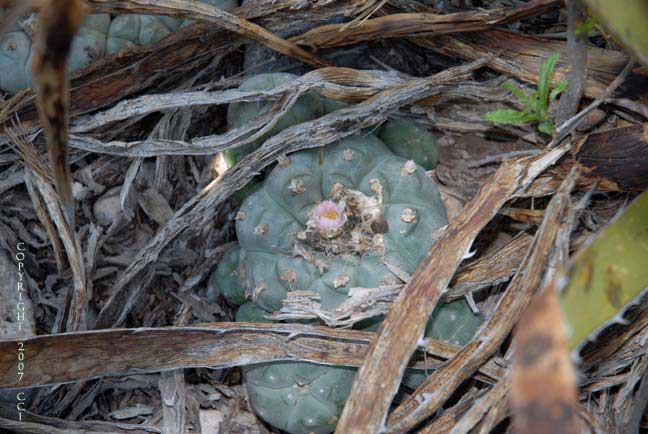
These plants appear to be morphologically similar to if not identical with the South Texas populations. It is not known if these Tamaulipan plants are also similar to the South Texas plants in terms of their fertility (self-fertile) or if they are more like the El Huizache plants that known to be self-sterile (next image below) or if they lie somewhere in between. Their DNA can tell us the answer to this question. This underlines the need for a DNA-based genetic study across the geographic range of the genus.
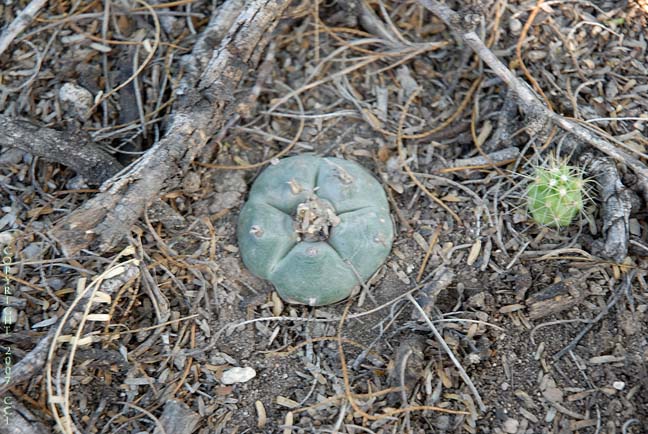
Greenhouse breeding experiments by Bohata and colleagues in the Czech Republic and Koehres in Germany have shown that plants from this population are self-sterile and therefore obligate outcrossers (leading one to suspect a great deal of genetic diversity with many genotypes occurring in a single population).
Lophophora diffusa is a more southerly species that has been long accepted by botanists.
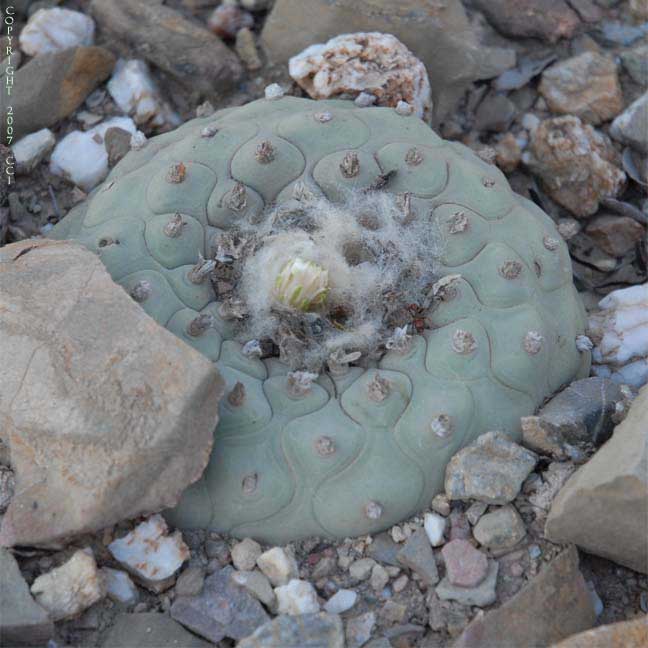
L. fricii is a northerly form with a chemical profile more resembling that of the southern L. diffusa than the much closer L. williamsii.
As is true for L. williamsii, it also has two distinct forms in need of more study.
These populations are geographically separated by around 20-25 miles.
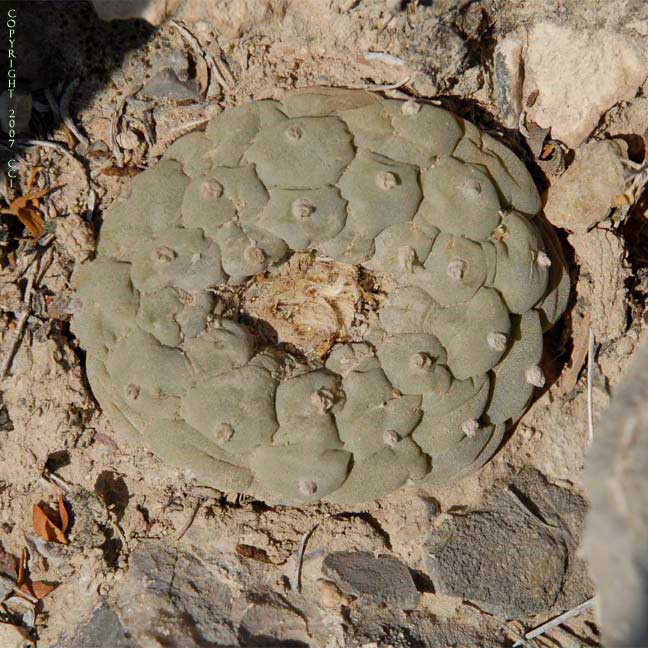
These are more often solitary than offsetting. These love growing among rocks. They are found in mountainous terrain above a certain elevation but never on the lower slopes.
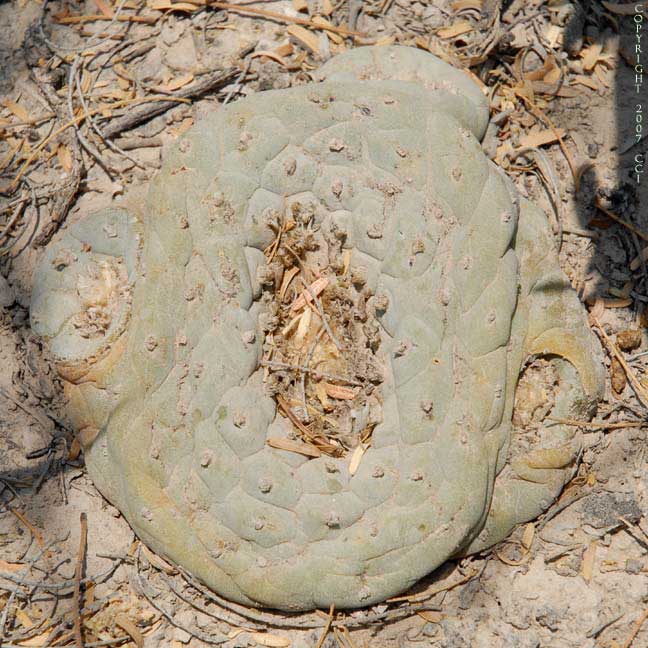
L. koehresii is the most recently accepted new taxon in the genus.
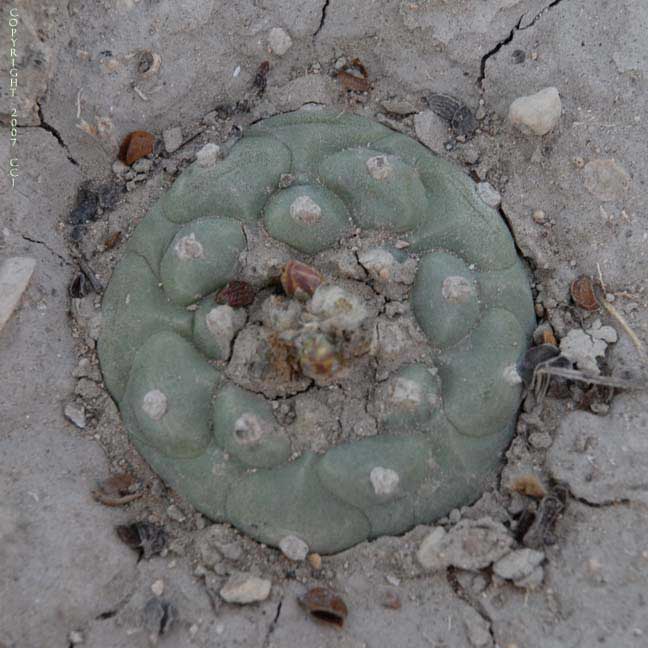
L. koehresii‘s range overlaps L. williamsii range in part but it does not share the same habitat and instead prefers mud flats.
The exact relationship of these species is a question that has long fascinated and often frustrated botanists.
To be able to know the answers using modern analytical techniques, the DNA of bona fide wild populations would be required for study.
It was with this in mind that field research was organized with the help of our academic colleagues in Mexico and the pertinent regulatory institutions of Mexico and the USA.
More recently a fifth new miniature species of Lophophora was described.
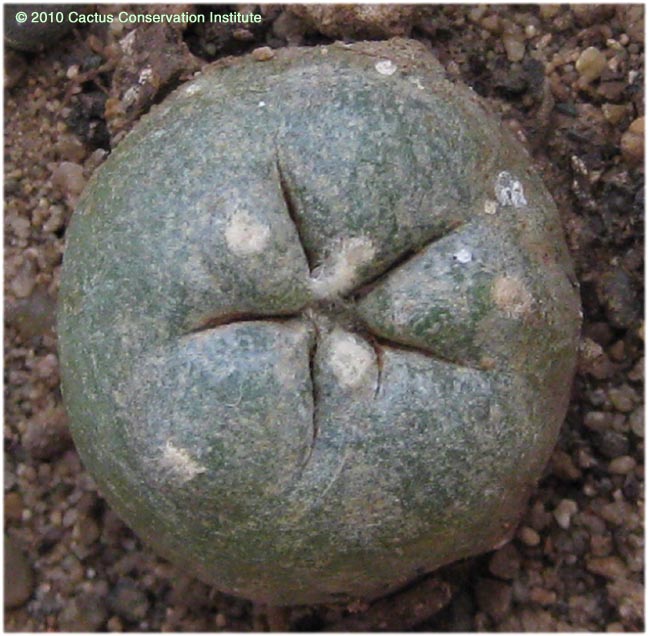
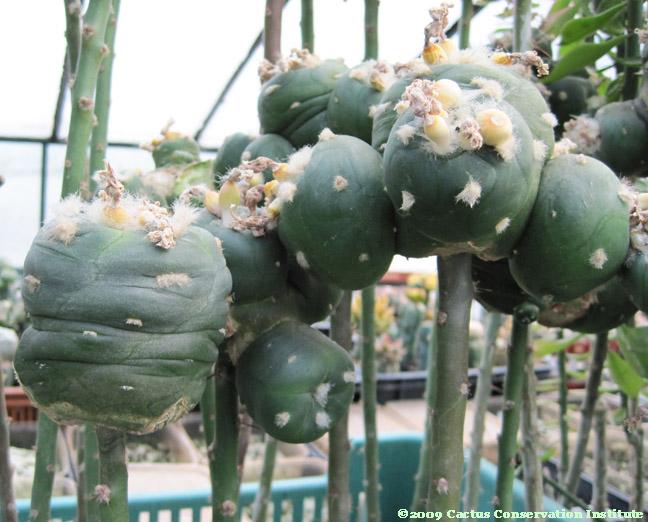
This is species preservation in action.
See details about Lophophora alberto-vojtechii in: Jaroslav Bohata 2008 Cactus & Co 2 (12): 105-117. and Snicer et al. 2009. The Littlest Lophophora. CSJ
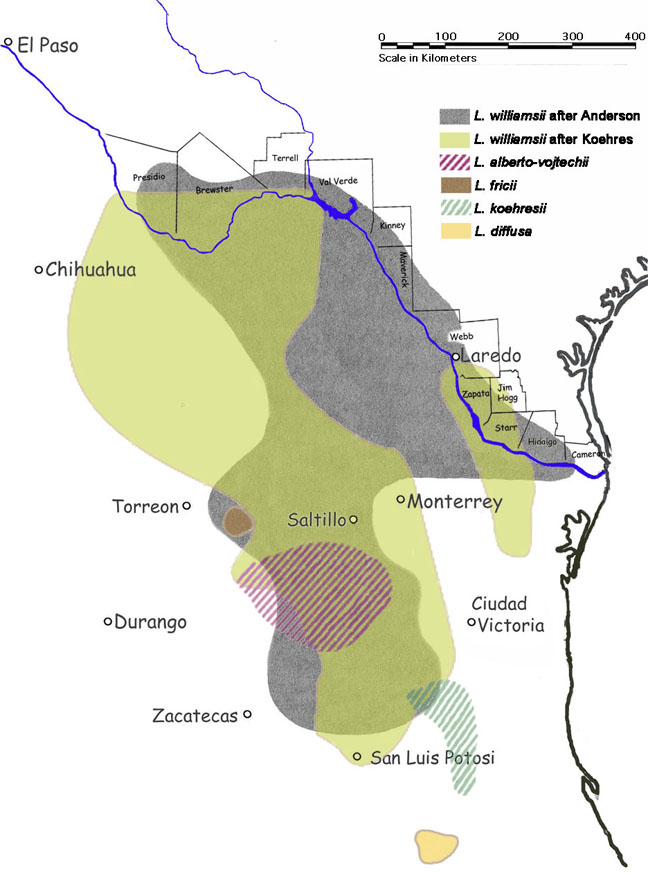
(above merges the distribution maps of Anderson, Koehres & Jarda)
Our adventure begins!
The Motel La Vaquita (“The Little Cow”), Matamoros, Coahuila.
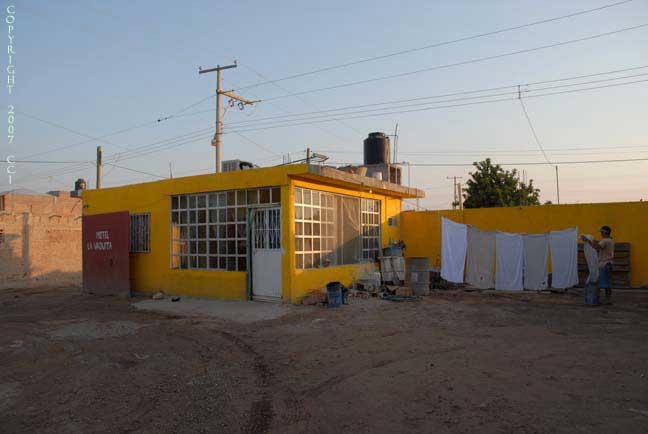
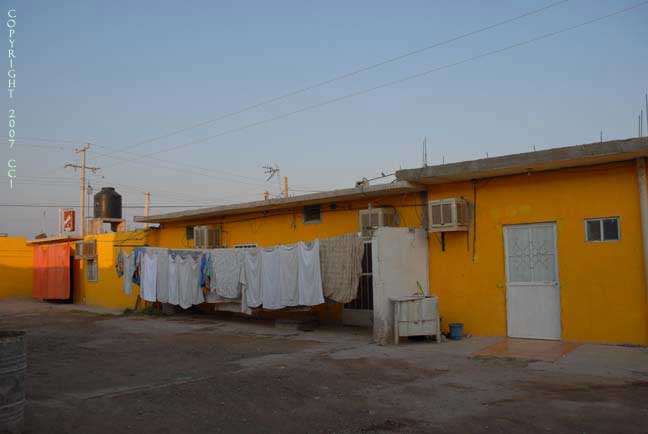
Peyote is a cryptic species which can be hard to spot even when present in abundance. These Larrea shrubs are common nurse plants. Can you see peyote growing under them? Neither could we. This is Lophophora williamsii habitat in the Sierra de la Amargosa.
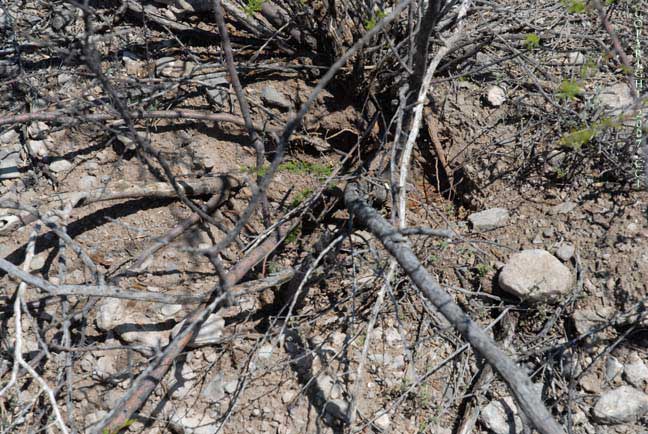
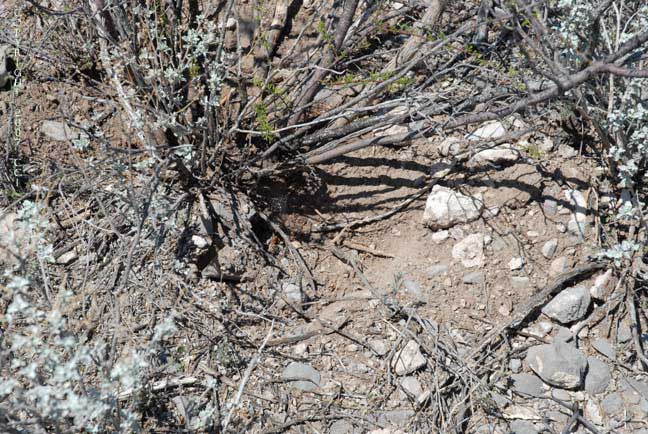
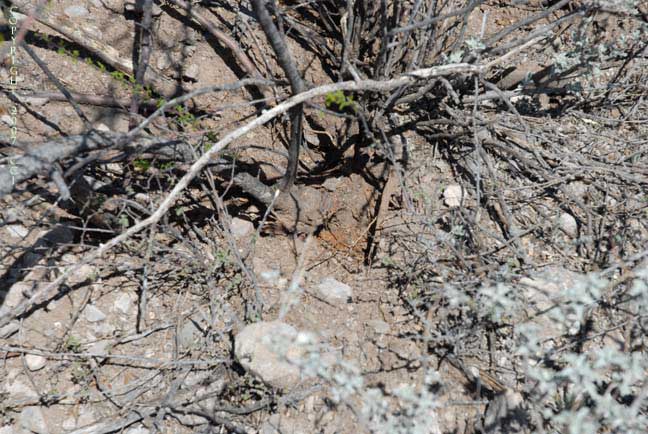
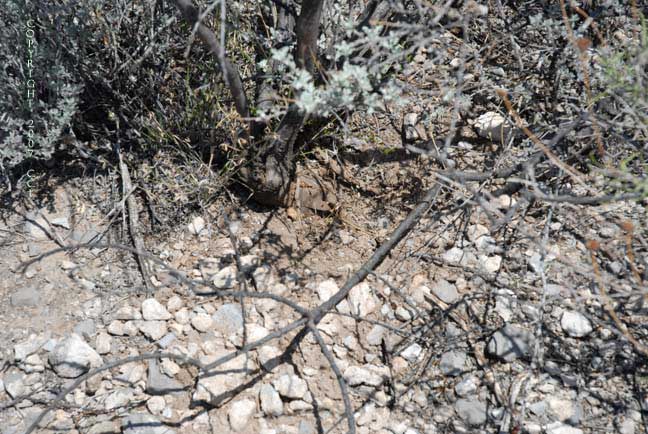



We expected to find L. williamsii here but instead found only holes precisely where the peyote plants would have been.
Notice the shallow pits at the base of the badly trampled shrubbery where peyote plants should be growing? It appears that these peyotes were harvested along with their roots.
If any viewers have trouble imagining where the peyote plants would normally be in these photographs, take a look at some other peyote plants that are growing with similar nurse plants and then come back here to look for the shallow holes in similar spots in these images.
A closer view of Lophophora williamsii in habitat near Saltillo.
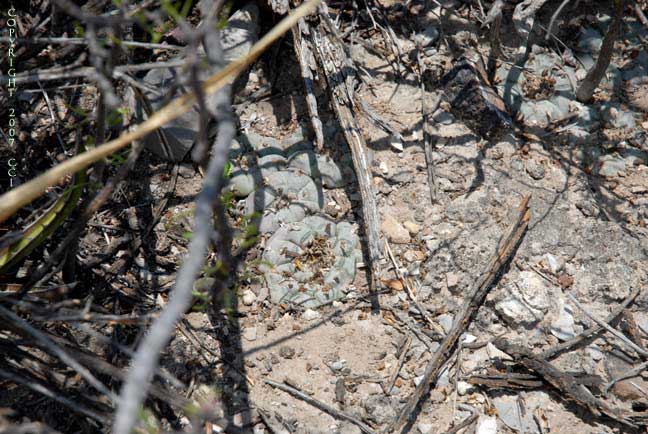

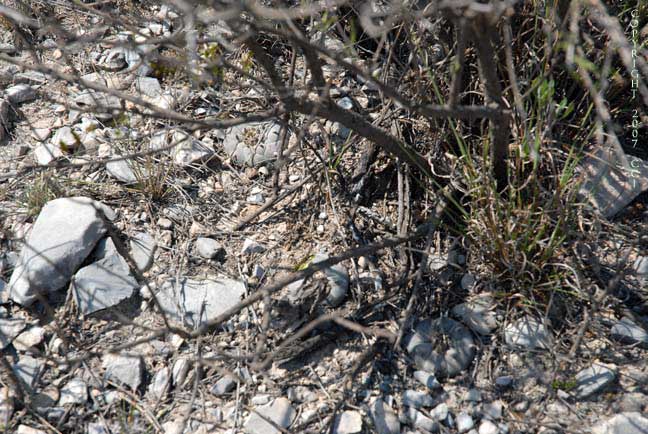

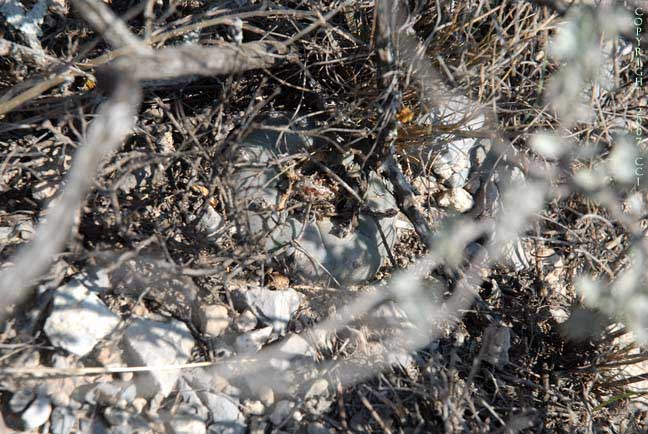

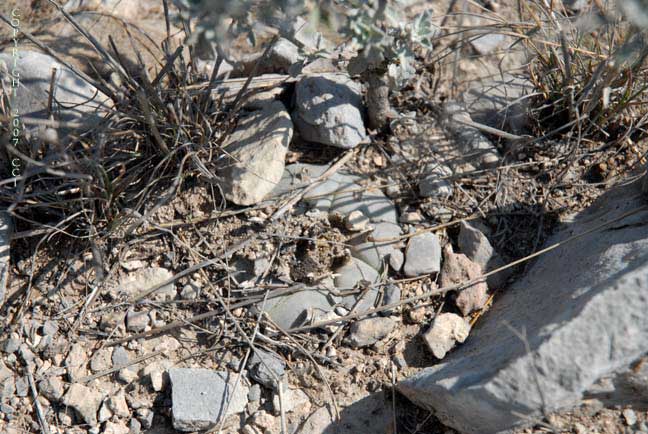

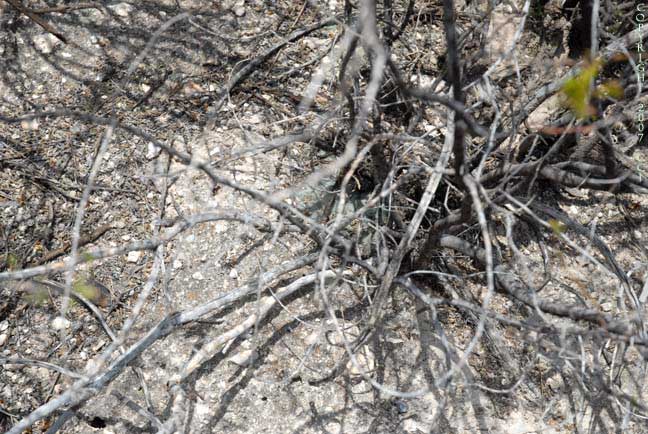

We located Lophophora fricii growing on this rocky mountainside not too far from Viesca, Coahuila. This is the montane subtaxon of the species.
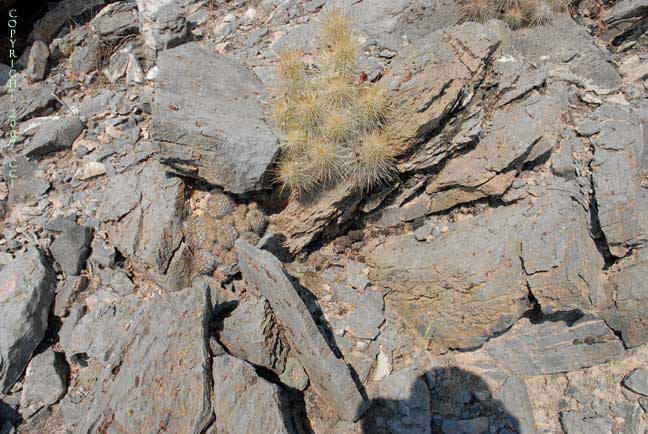


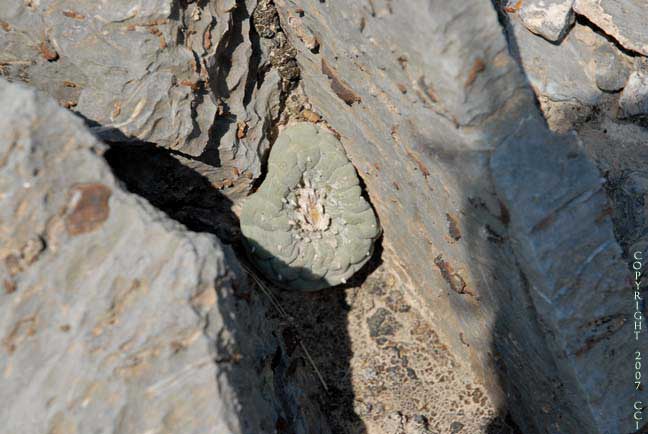


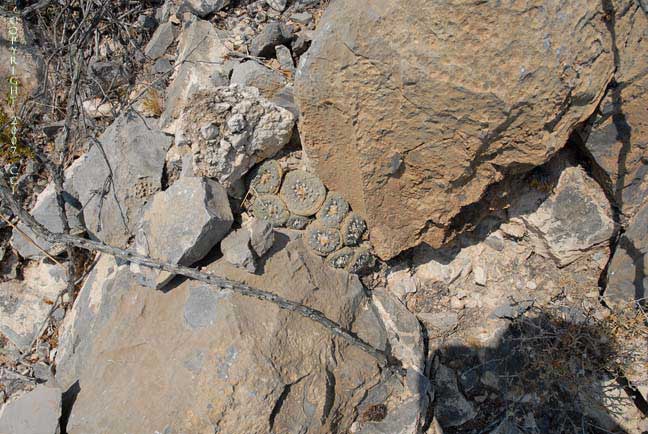


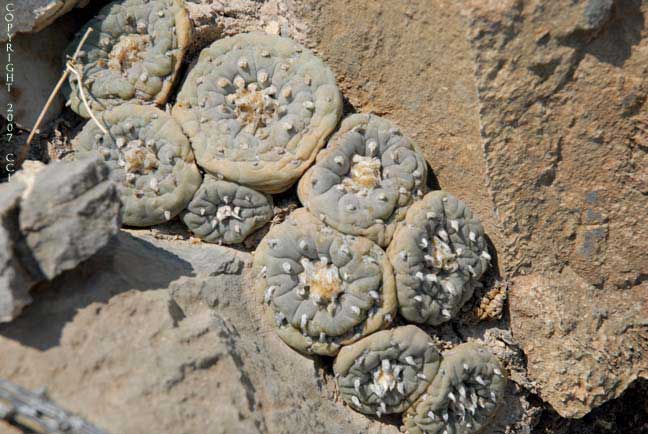


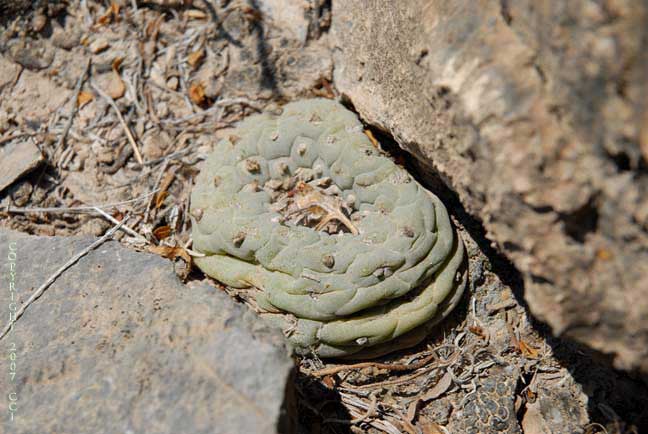


This species, despite its rough resemblence to Lophophora williamsii, is not hallucinogenic.
Whereas L. williamsii contains mescaline as its major alkaloid, L. fricii contains only traces of mescaline which are pharmacologically inactive.
We located Lophophora fricii growing on this rocky mountainside not too far from Viesca, Coahuila. This is the montane subtaxon of the species.















This species, despite its rough resemblence to Lophophora williamsii, is not hallucinogenic.
Whereas L. williamsii contains mescaline as its major alkaloid, L. fricii contains only traces of mescaline which are pharmacologically inactive.
These silty mesquite-agave flats are home to the other subtaxon of Lophophora fricii. This is on the opposite side of the usually dry Laguna de Viesca from the previous site. The first view of habitat illustrates the distance to the nearest mountains.
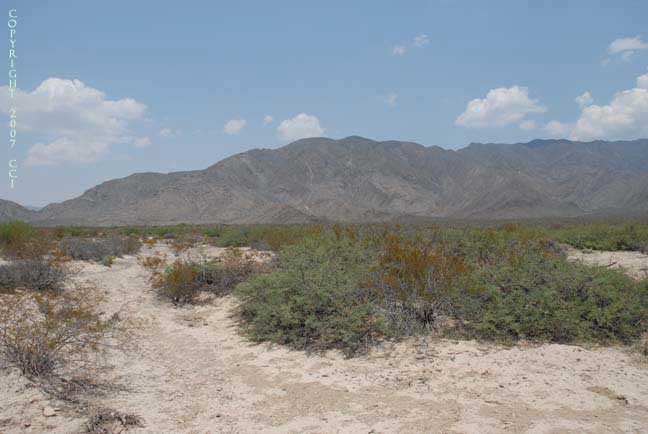

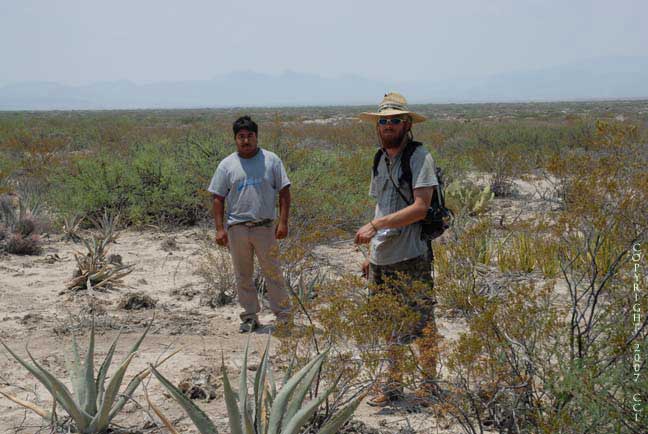

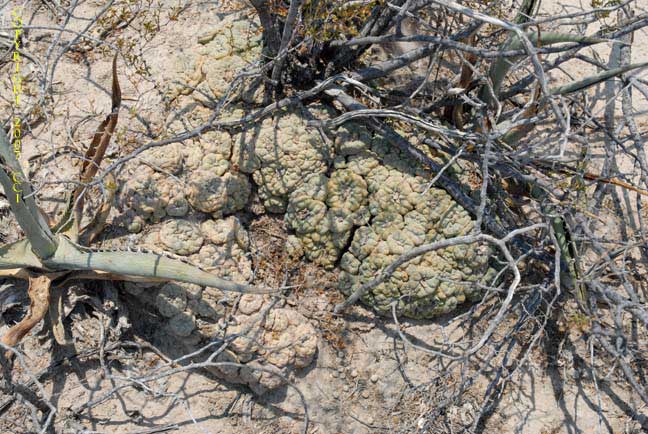

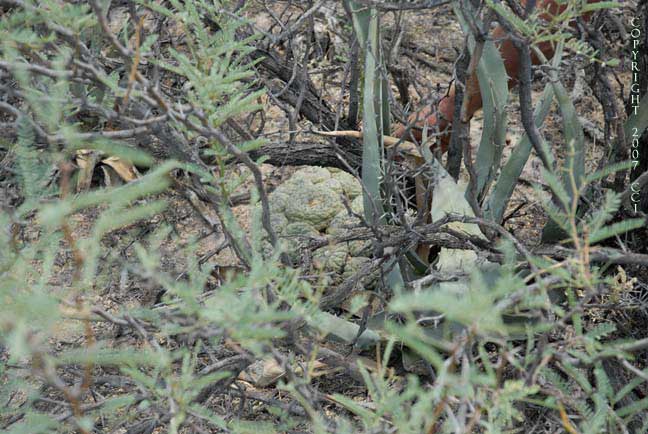

Lophophora fricii in habitat.




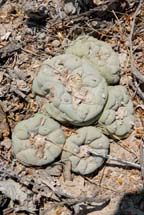

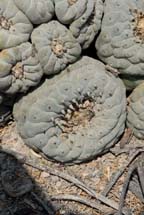



This form of the species, despite its rough resemblence to Lophophora williamsii, is also not hallucinogenic.
We located a population of Lophophora williamsii on this slope of a limestone mountain in the vicinity of Saltillo. L. williamsii plants are mostly under nurse shrubs, many are partly covered with the leaves of their nurse plants. A closer view of Lophophora williamsii in habitat near Saltillo.










If viewers have any trouble spotting the peyote plants that ARE in these images, go back to the locations of the holes shown earlier and then look in similar spots in these images.
***NEED CRYPTIC NEW LINK***
The alluvial flats below Real del Catorce in San Luís Potosí is perhaps the most famous habitat of Lophophora williamsii in Mexico.
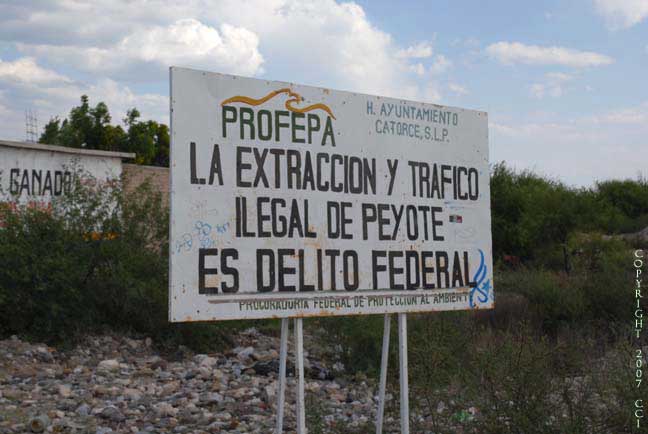

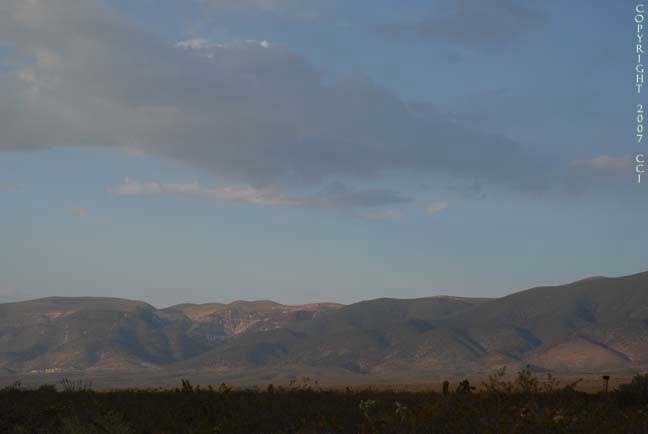

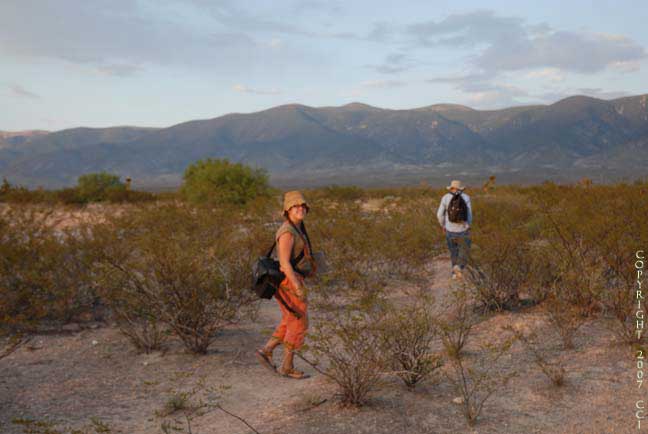

We found that Lophophora williamsii was present but the population was rather sparse at this site near Real del Catorce. The prevailing view is that this is presumably due to chronic overharvesting by “narcotourists”.
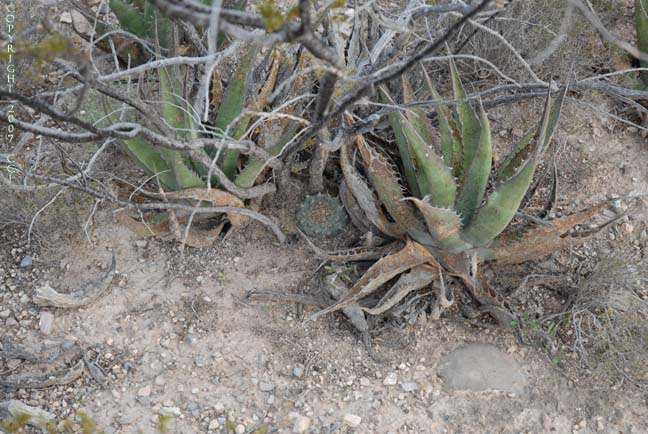

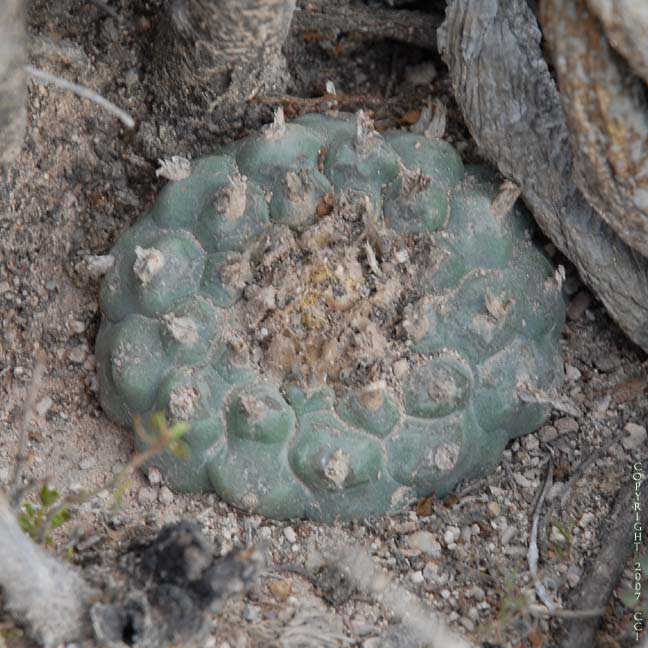

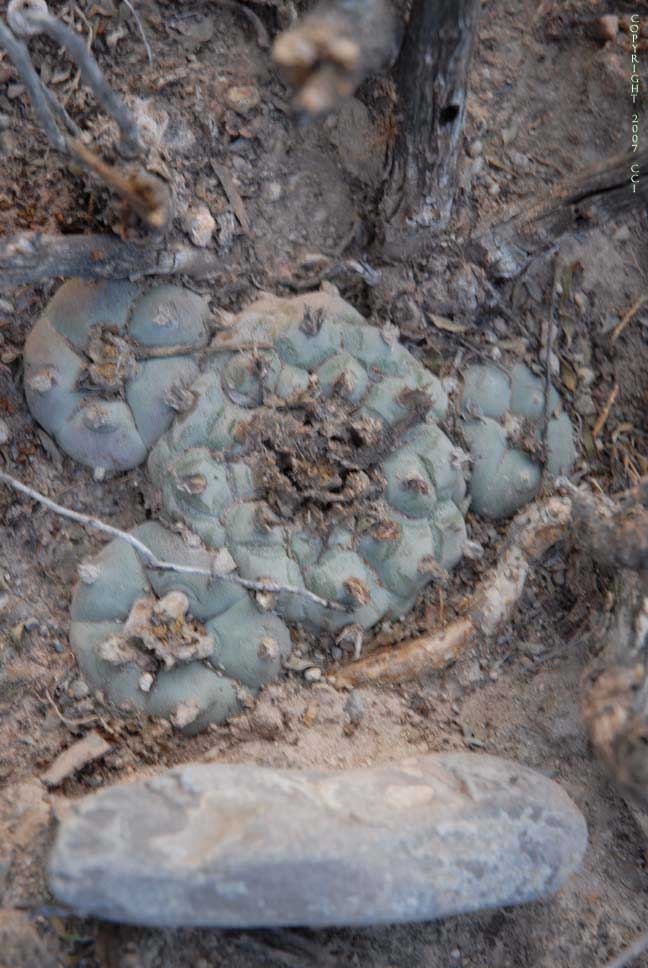

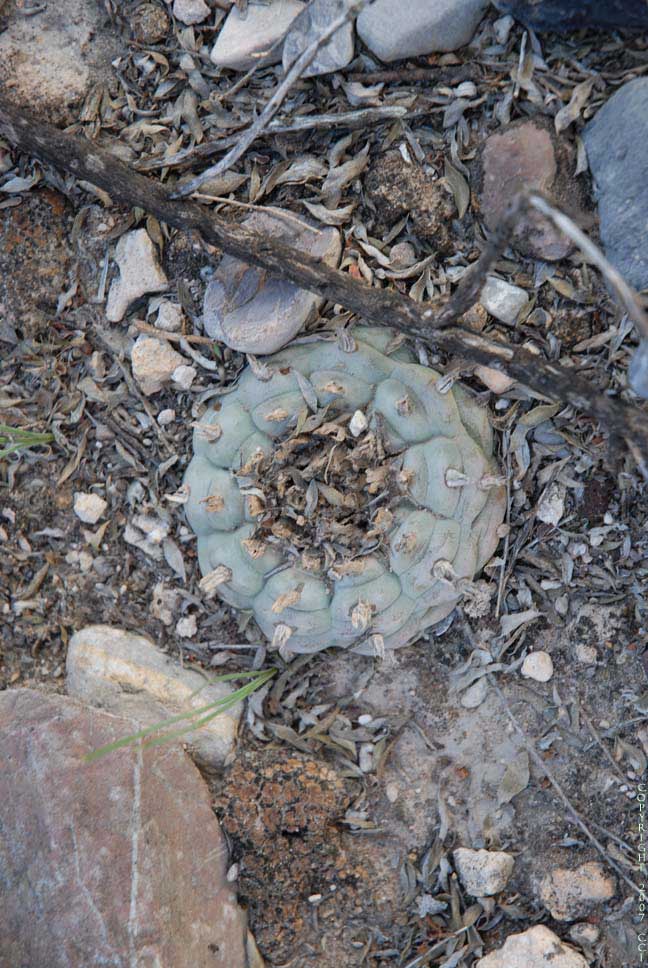

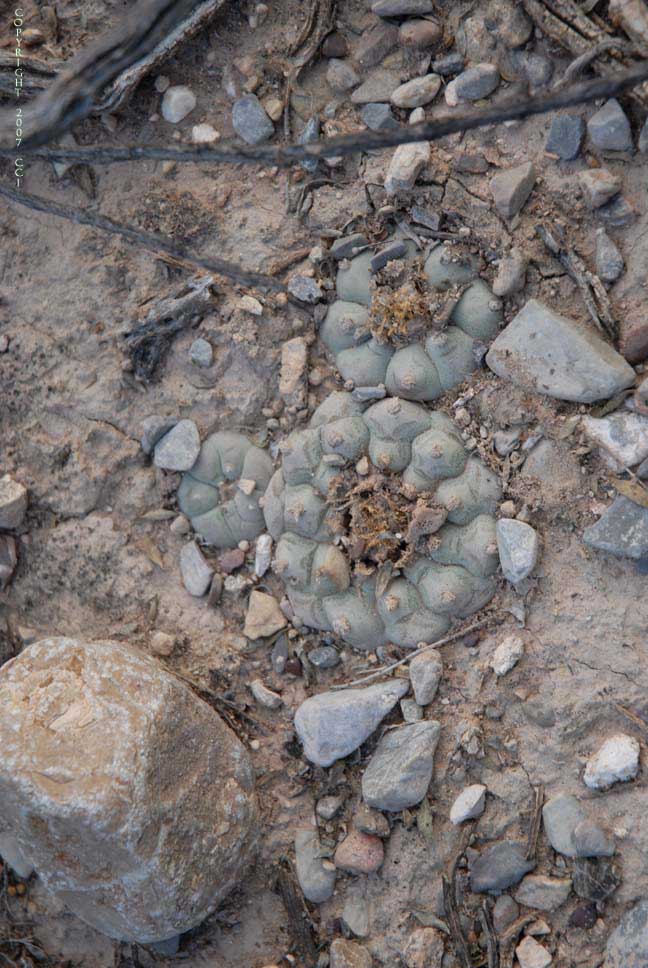

We also examined a population of Lophophora williamsii in Nuevo Leon.
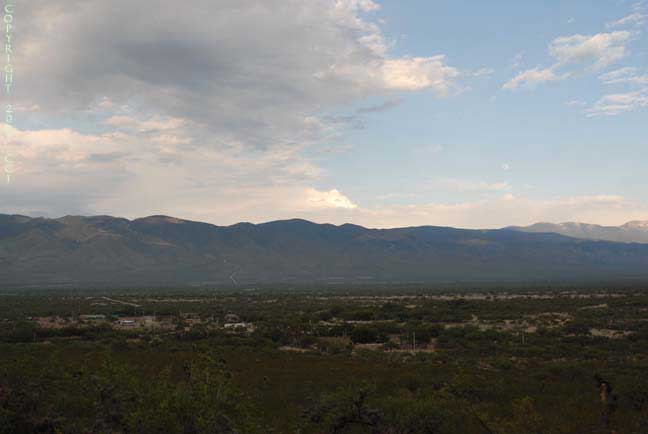

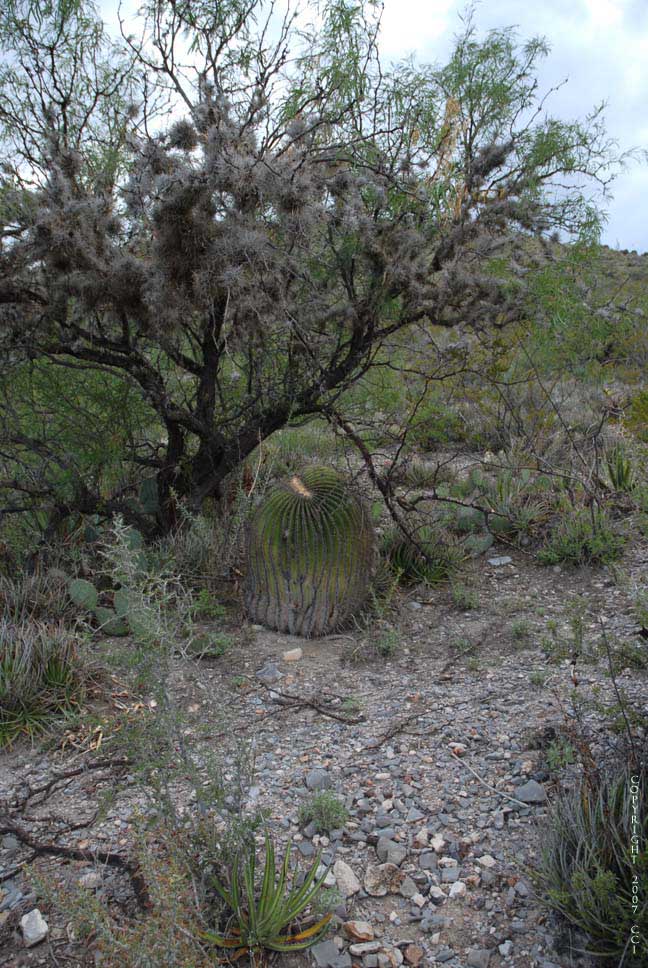

Lophophora williamsii growing in habitat in Nuevo Leon
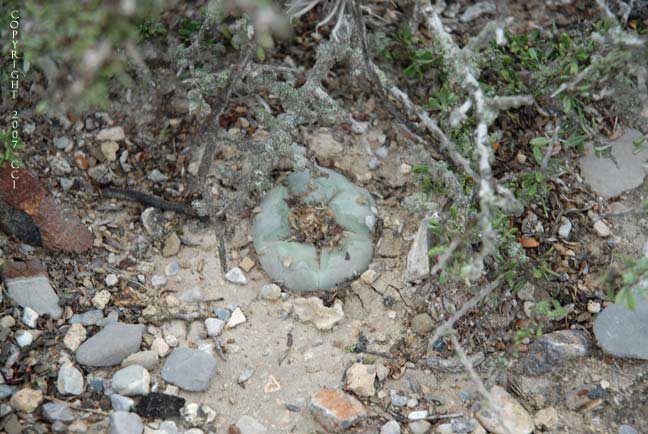

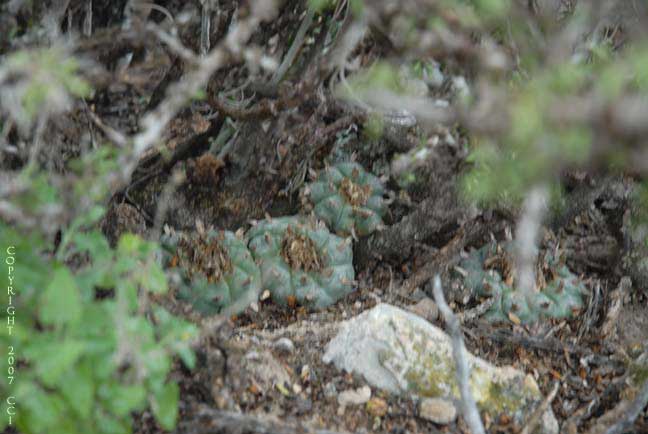

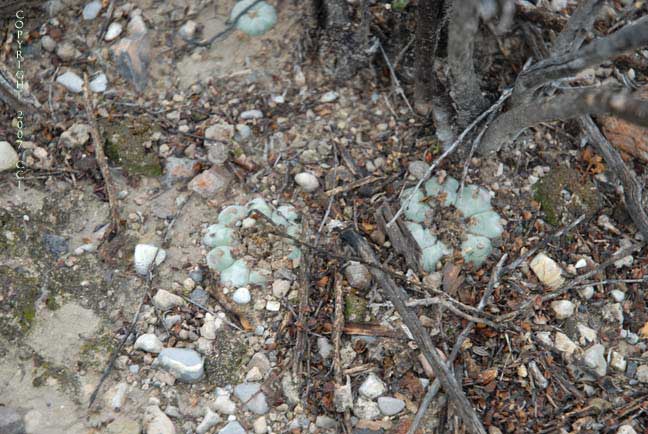

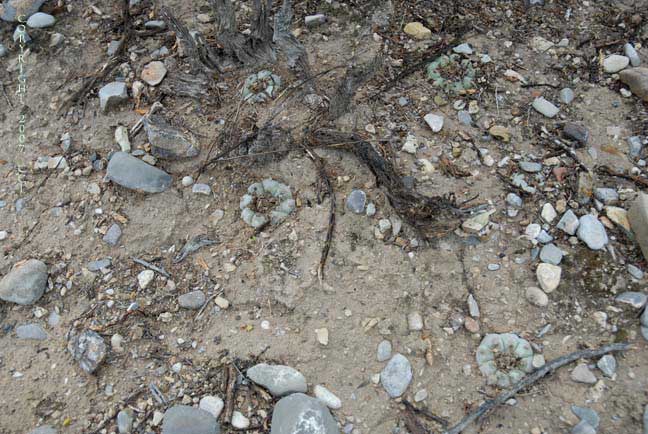

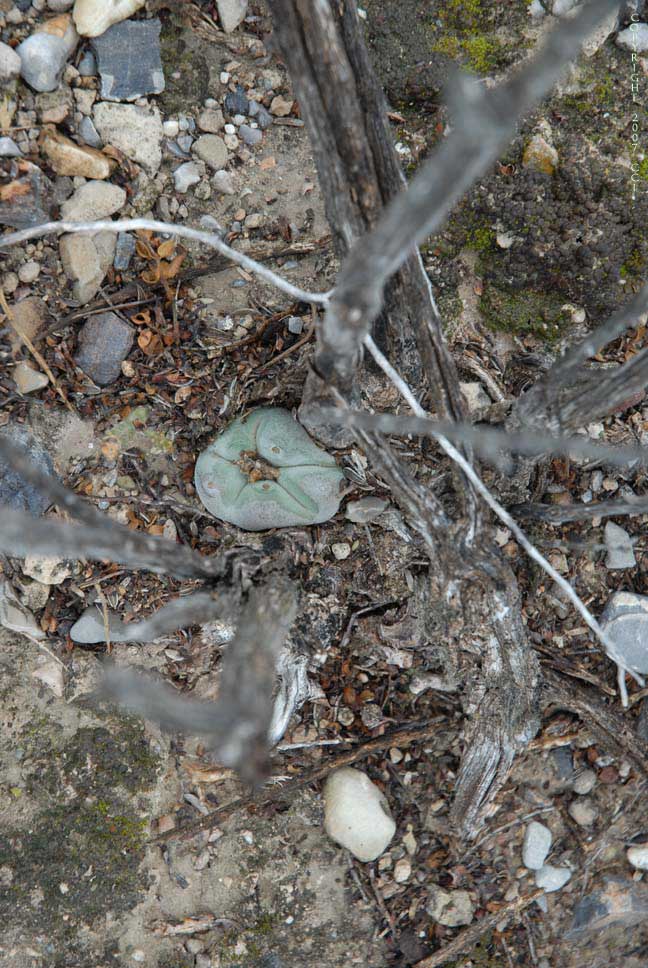

Next we examined specimens in the Miquihuana population of Lophophora williamsii in Tamaulipas.
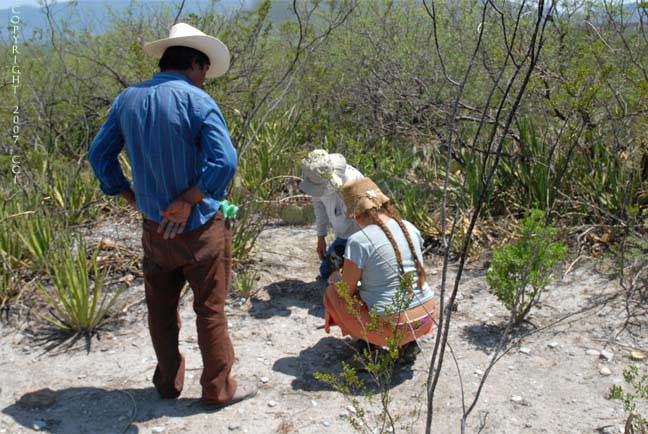

Lophophora williamsii growing in habitat in Tamaulipas.
These plants are morphologically indistinguishable from those of the population in the Peyote Gardens of Texas although specimens with so many mature crowns are now rarely encountered there.
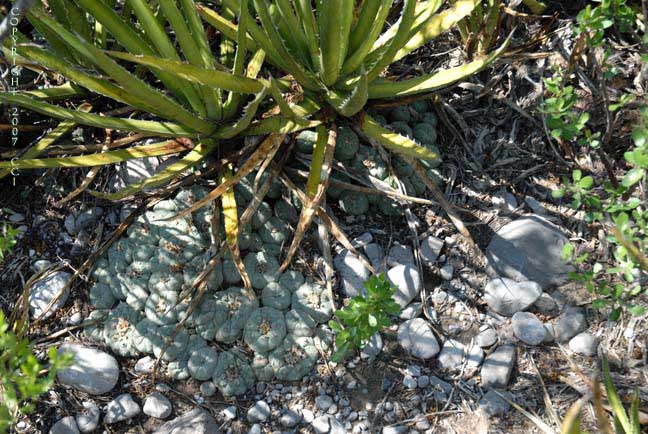

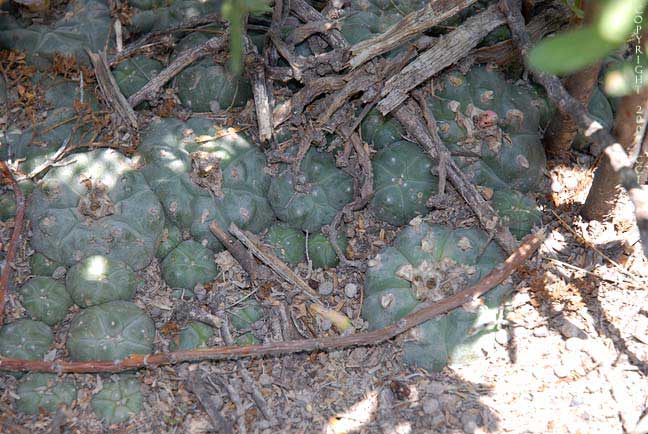

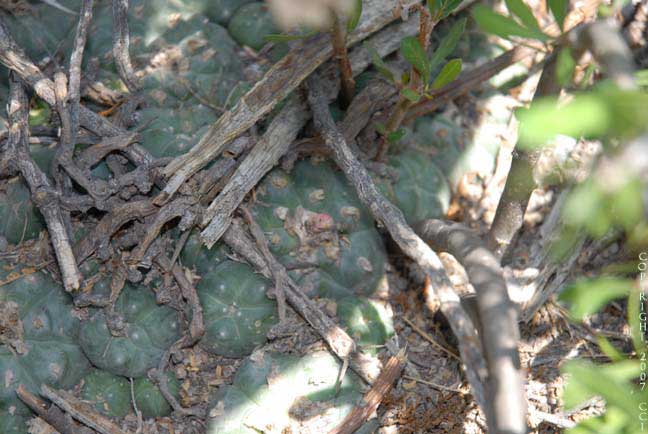

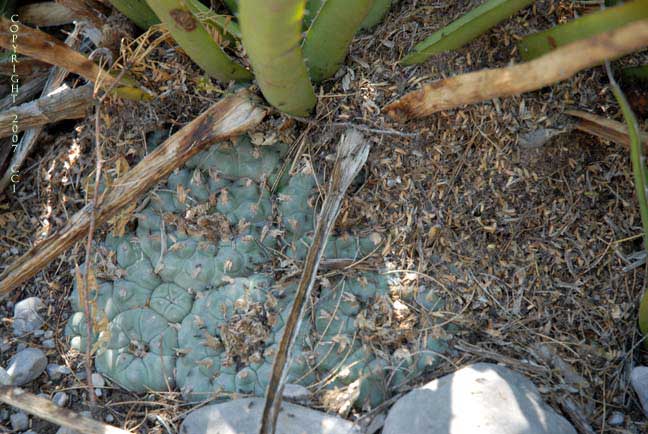

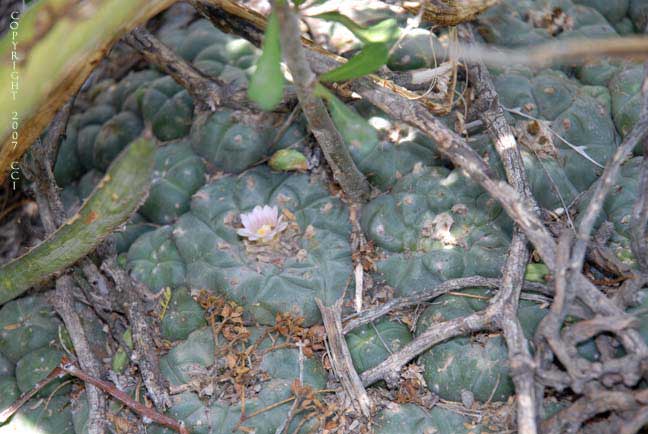

While we were in southern Tamaulipas we also looked at a population of Lophophora koehresii.
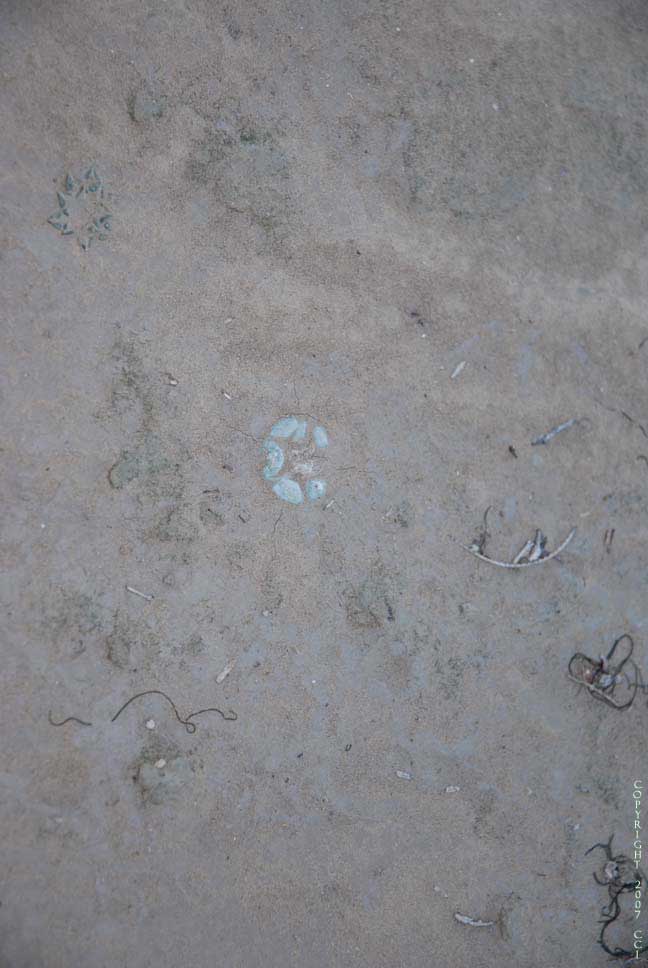

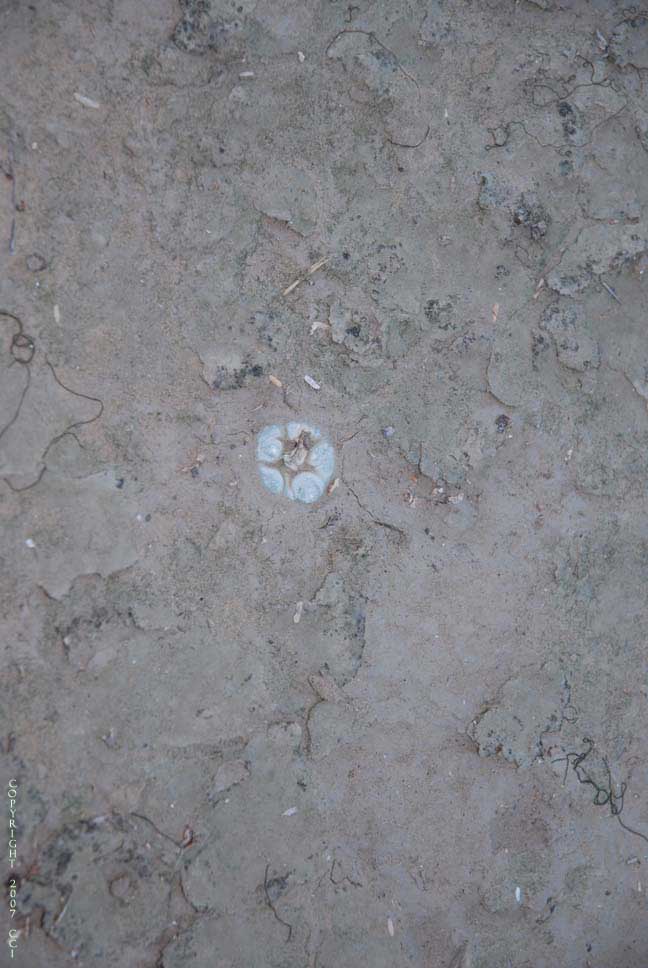



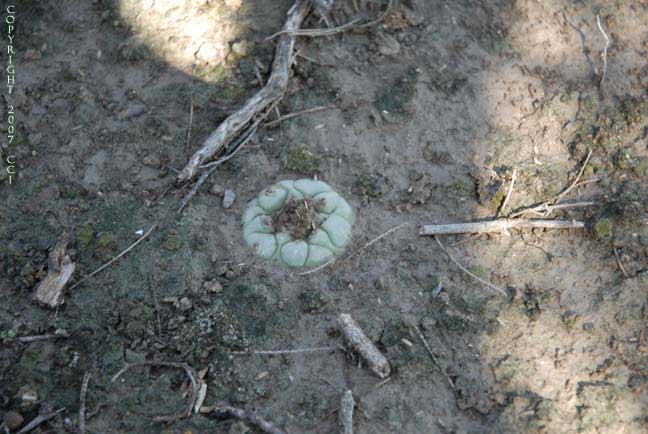

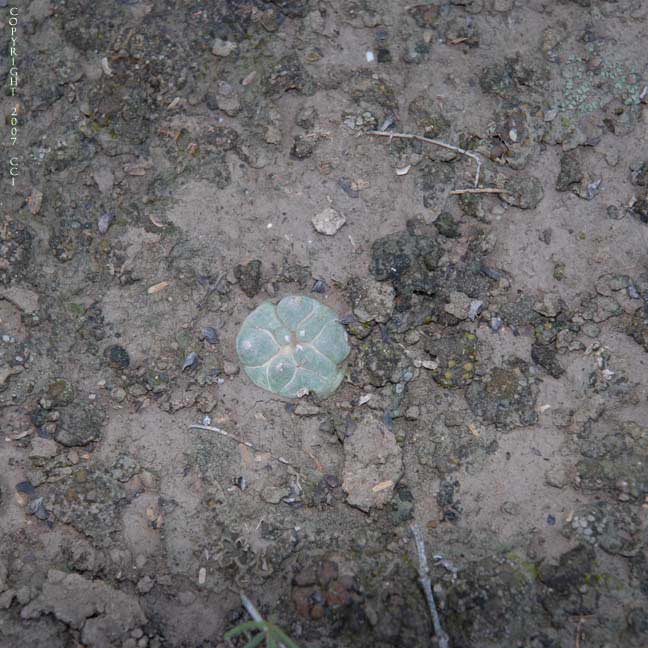

This species, despite its rough resemblence to Lophophora williamsii, is not hallucinogenic. L. williamsii has mescaline as its major alkaloid but L. koehresii contains only traces of mescaline and is therefore pharmacologically inactive. Notice the Ariocarpus kotschoubeyanus growing to the upper left of the Lophophora koehresii in the upper left image?
While we were in southern Tamaulipas we also looked at a population of Lophophora koehresii.
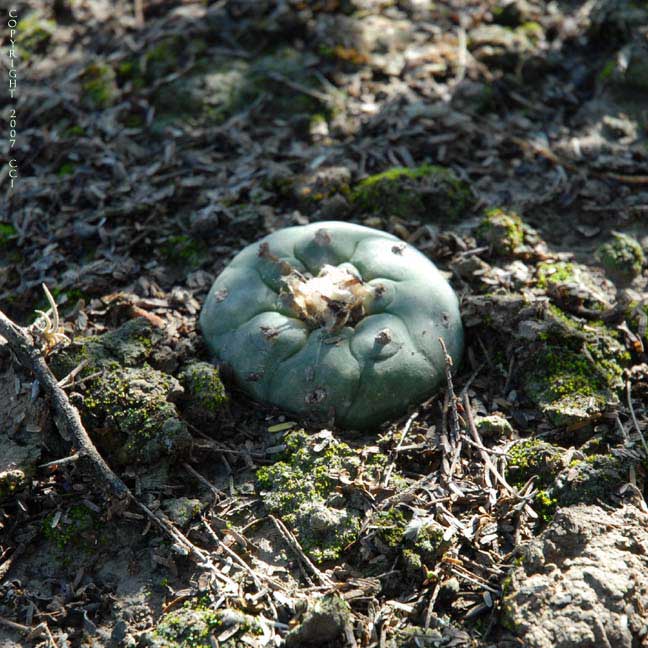

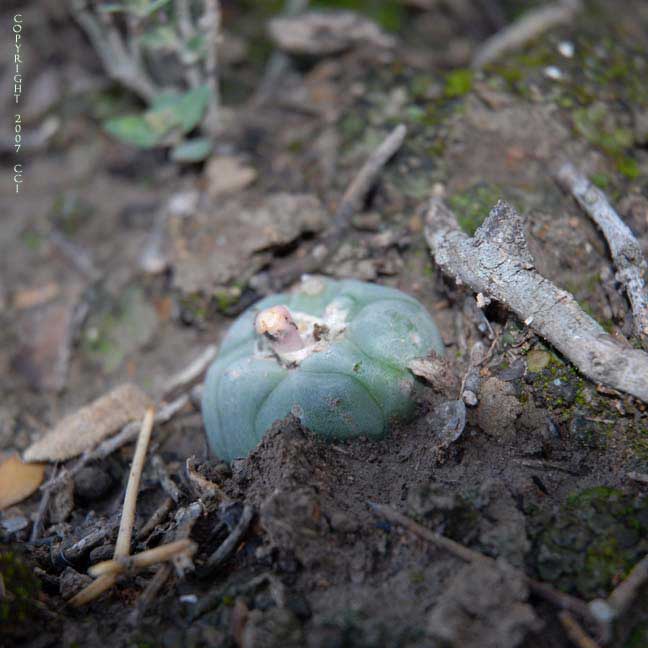

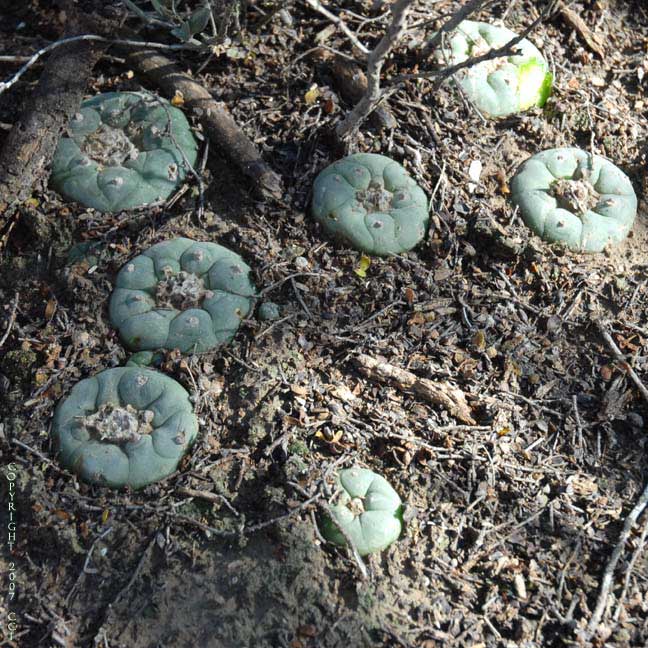

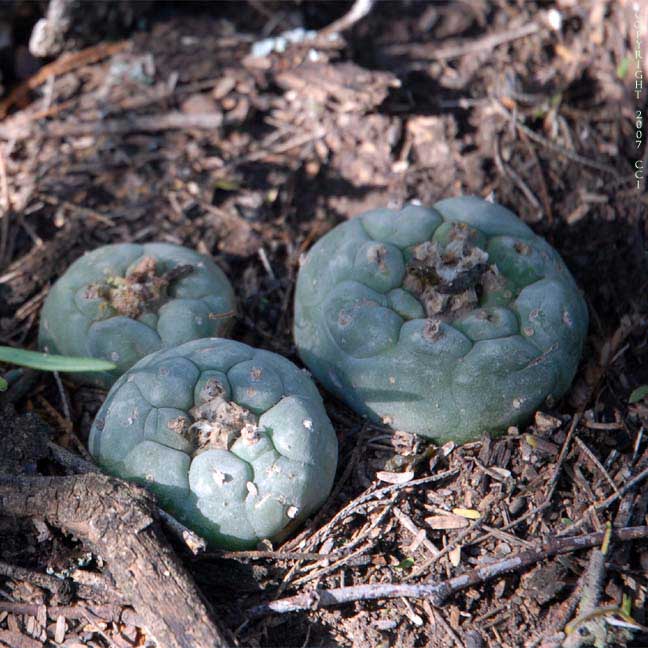

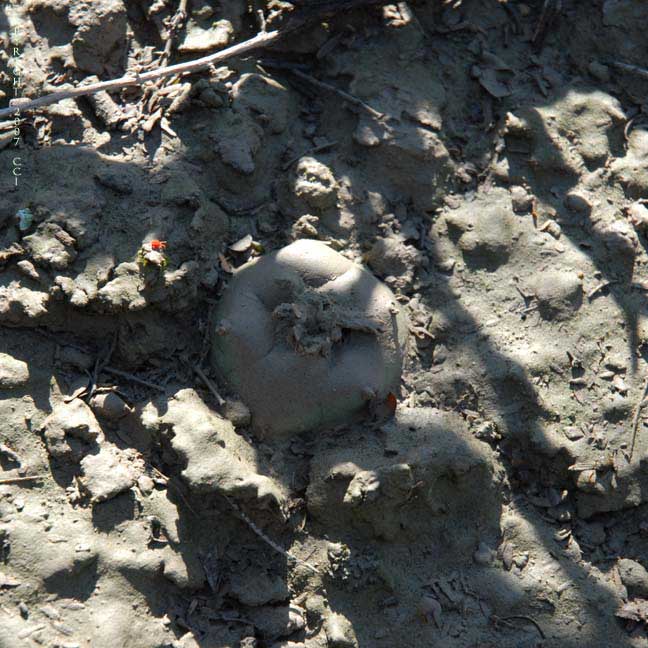

At this site heavy rains the night before our arrival washed off many of the plants for us.
Lophophora williamsii & habitat in San Luís Potosí. Our next stop is and/or was part of the famous El Huizache population. Once again we encountered signs of habitat devastation with the peyote being harvested along with their roots. In their haste the peyote digging root harvesters appear to have missed one after removing the soil and adjacent plants.
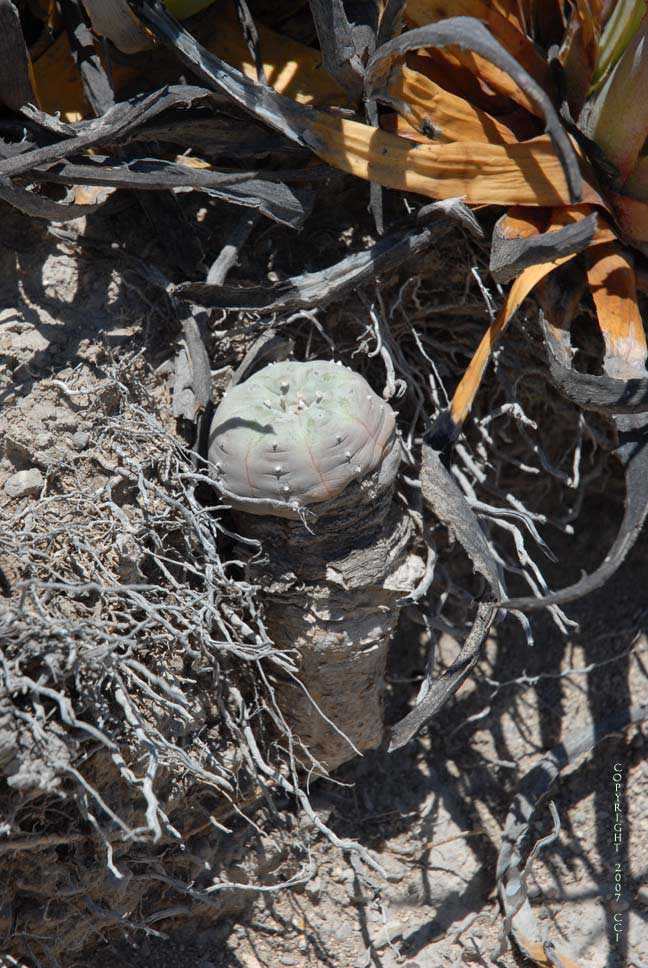

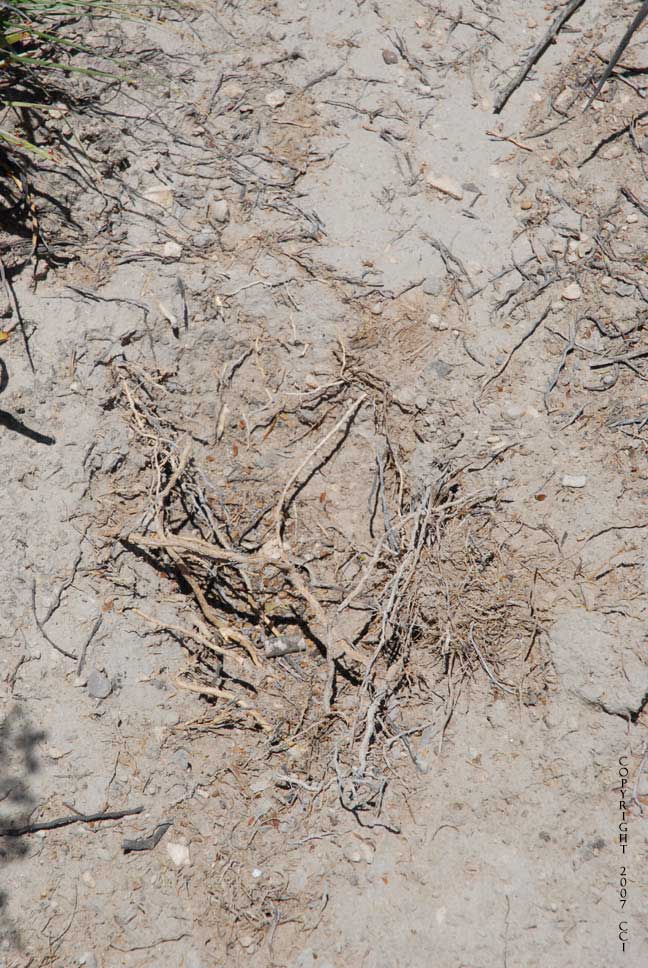

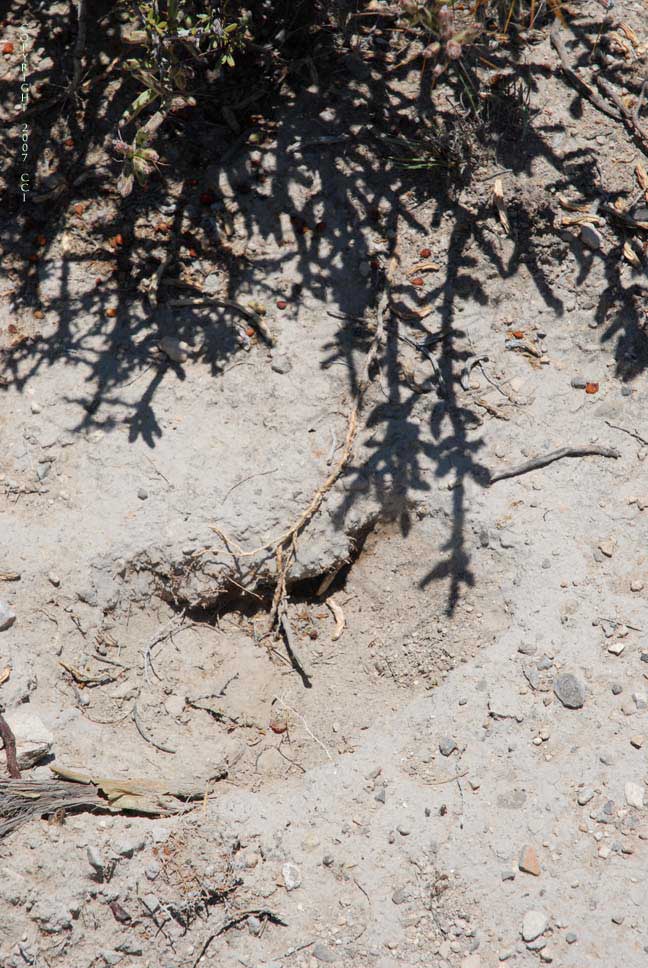

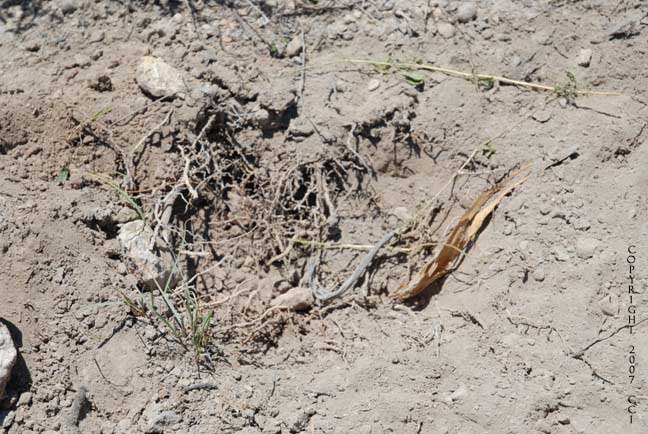

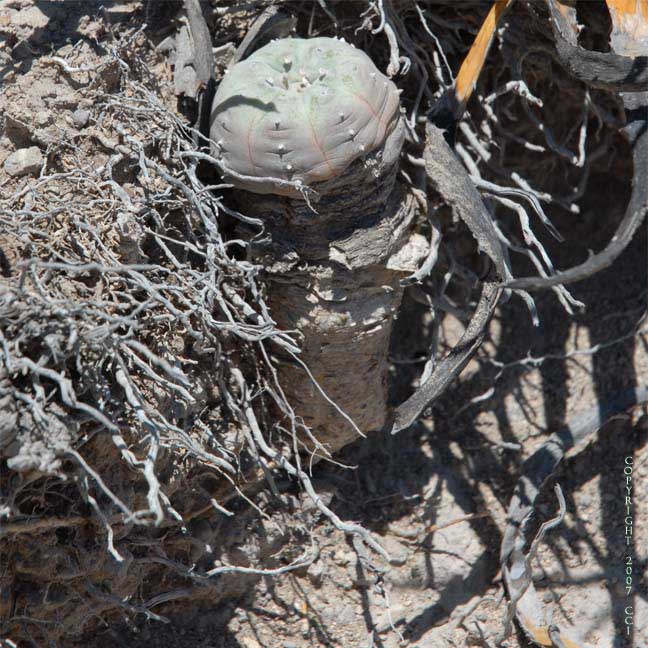

We also noticed the presence of a newly cleared field not far from this site. This clearing of cactus habitat for marginal agriculture is becoming increasingly common in the Chihuahuan Desert of Mexico.
Lophophora williamsii in habitat in San Luís Potosí. The habitat depicted on the previous page contained plants that looked very much like these prior to being raided by the peyote root digging poachers.
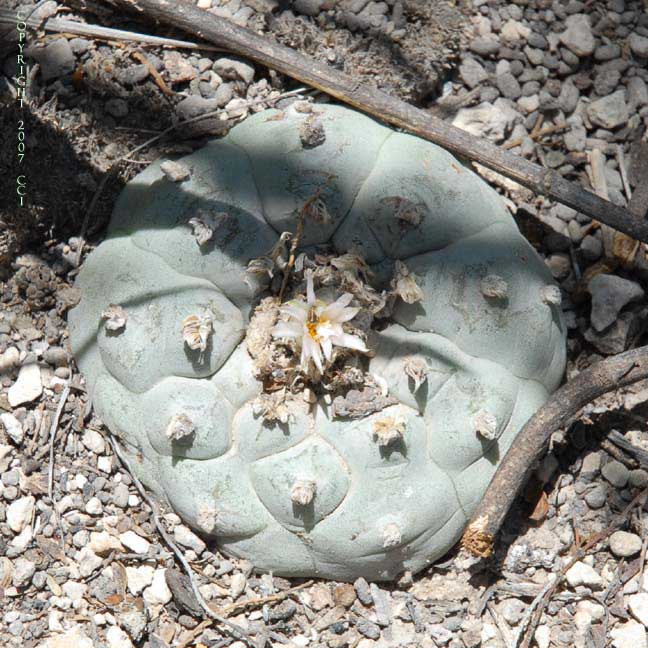

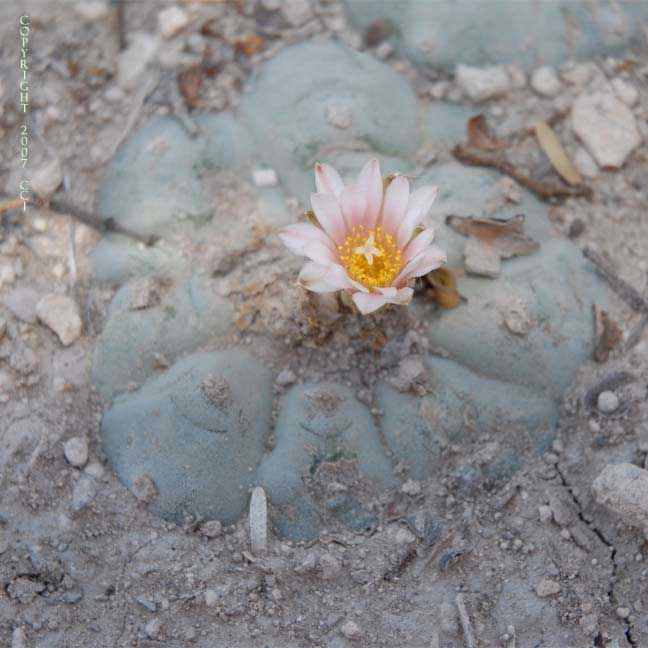

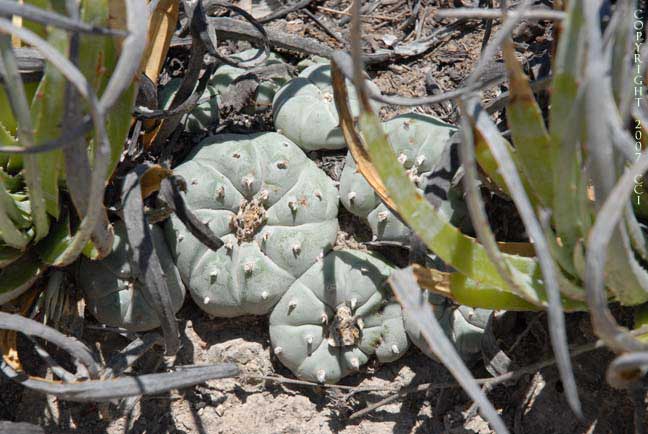

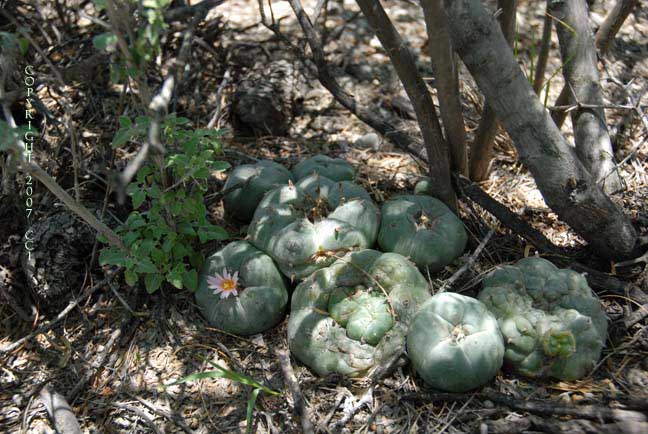

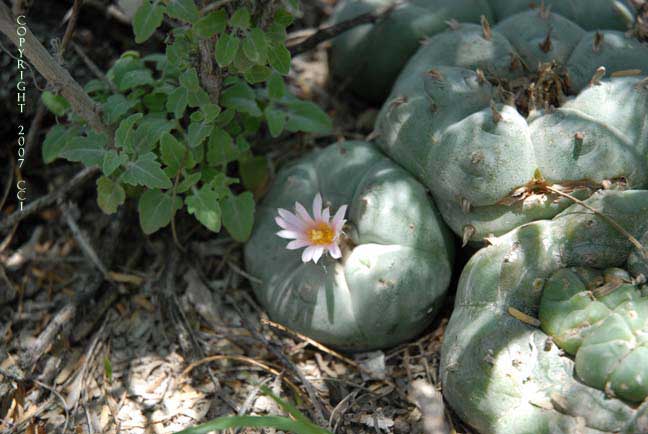

Lophophora koehresii in habitat in San Luís Potosí.
This appears to be the westernmost population of L. koehresii.
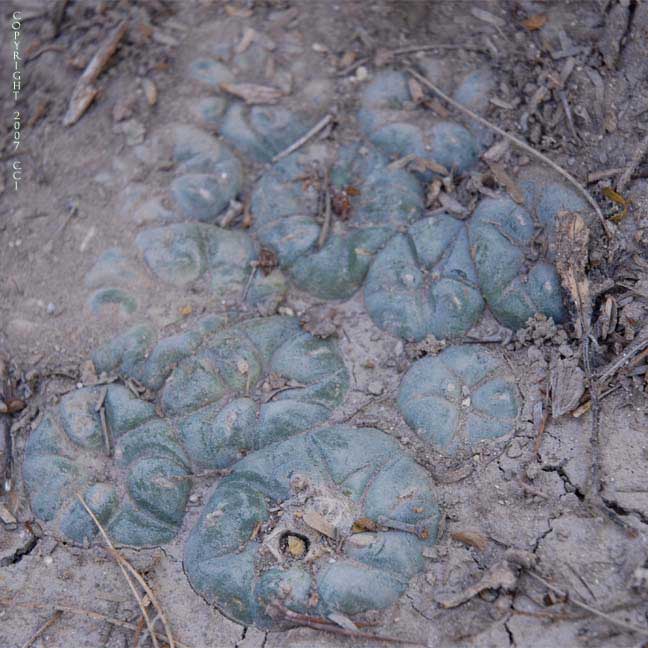

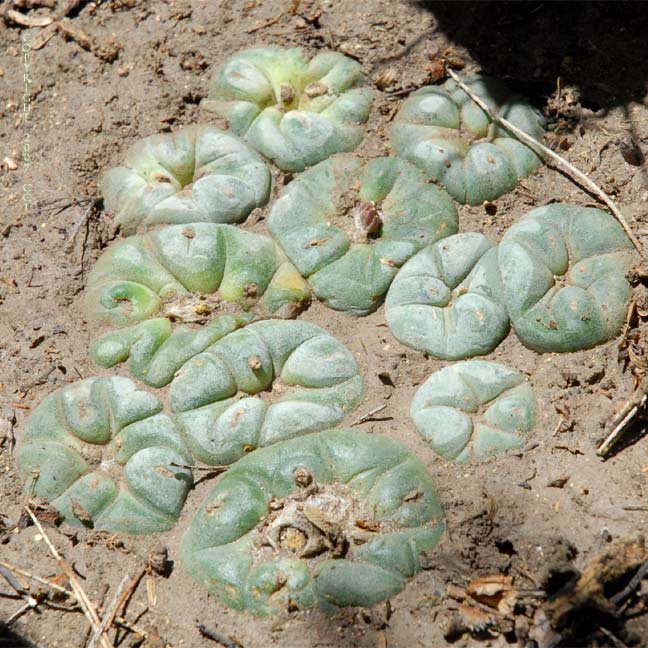

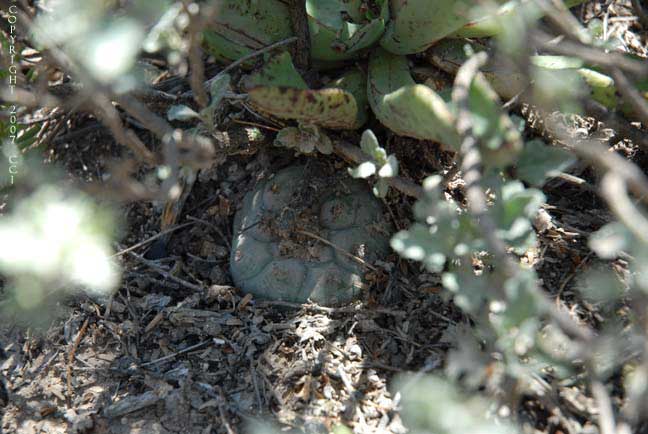

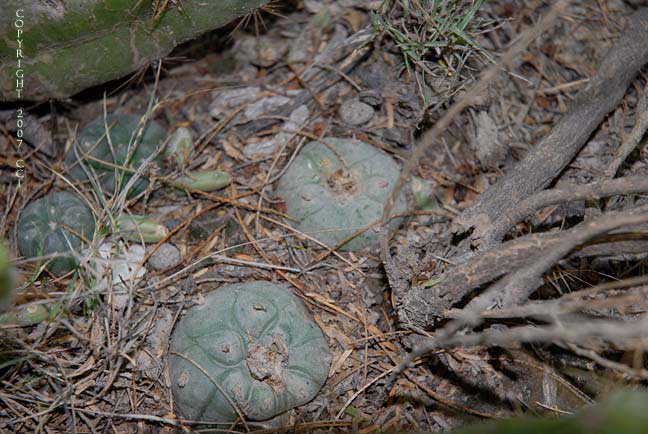

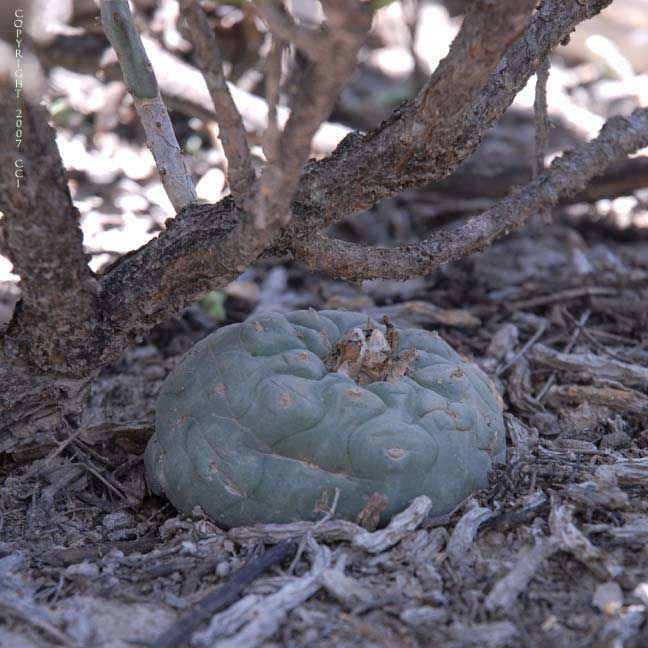

Lophophora williamsii in habitat in San Luís Potosí.
We found a small population located not too far from the L. koehresii we had just visited (half a kilometer) but growing in different habitat.
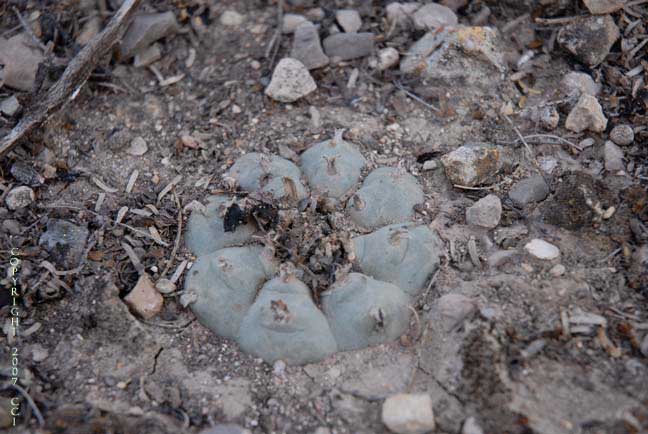

More evidence of plant habitat destruction was found, with the peyote being dug up along with their roots, but this time the root harvesting poachers forgot several of the plundered plants.
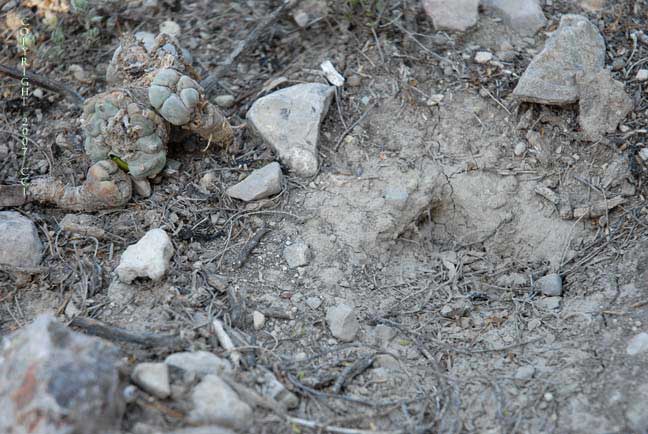

Interestingly the poachers went specifically for the L. williamsii and ignored the L. koehresii growing between the highway and the ridge where the L. williamsii was growing. This suggests that the poachers could tell them apart and were catering to a market that requires mescaline-containing plants rather than harvesting cacti for horticultural purposes.
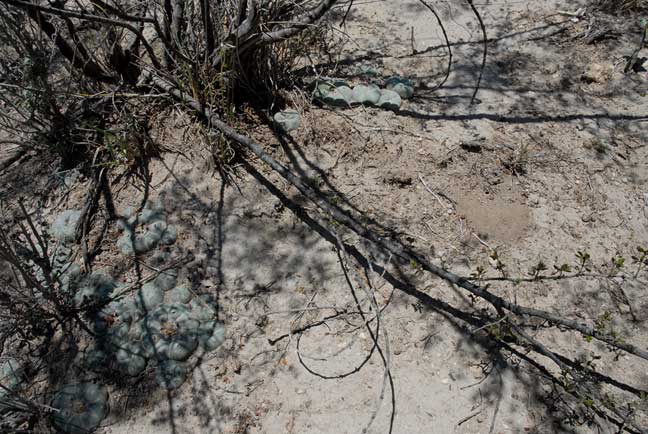

Another population of Lophophora koehresii; in habitat in San Luís Potosí. This population of classic L. koehresii was misidentified by Ted Anderson as L. williamsii. Notice how the soil has cracked around some (on this and the next page) as they have swelled following a recent rain.
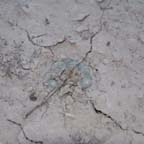

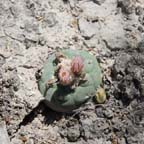

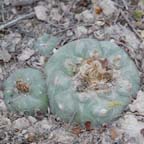

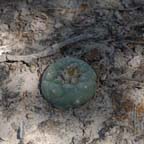

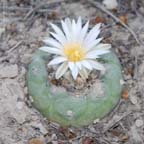

Another population of Lophophora koehresii; in habitat in San Luis Potosi. This is the southernmost population that we know about.
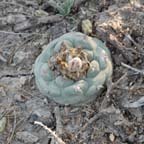

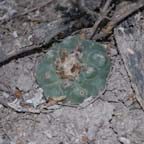

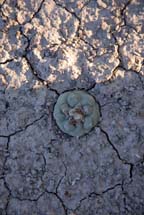

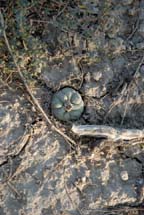



Lophophora diffusa in habitat in Querétaro. This is a northern population. Despite their rough resemblence to Lophophora williamsii, Lophophora diffusa is known to not be hallucinogenic. L. williamsii possesses mescaline as its major alkaloid but the published analytical accounts of L. diffusa have shown them to contain either no mescaline or else only minute traces which are pharmacologically inactive.




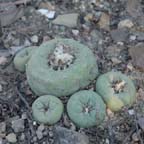

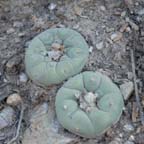

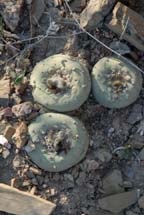

Lophophora diffusa (northern population) in habitat in Querétaro.
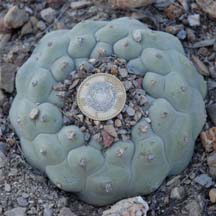

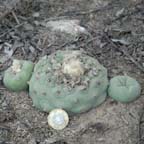

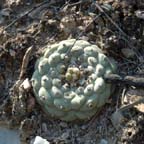

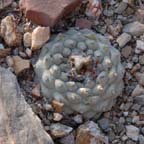

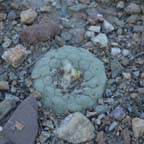

Lophophora diffusa in habitat in Querétaro. This is a southern L. diffusa population. Despite their rough resemblence to L. williamsii, Lophophora diffusa is not a hallucinogenic plant.




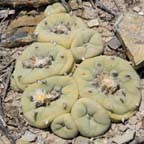

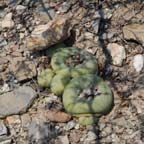



Back to civilization.
The Motel Santa Rosalía, Camargo, Chihuahua.


Can you correctly identify the four Lophophora species that are pictured below? Scroll to the bottom to find the answers.
